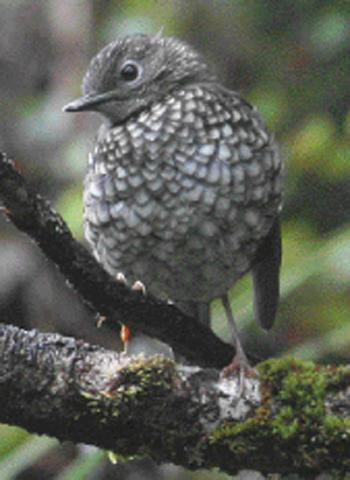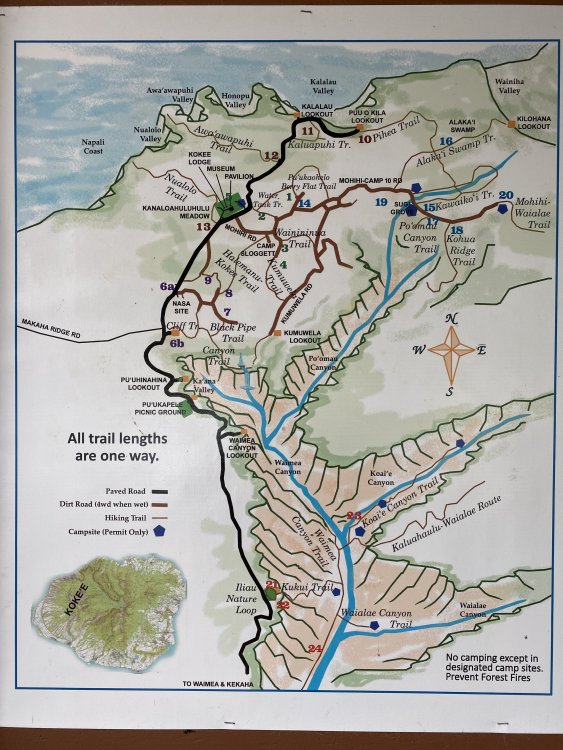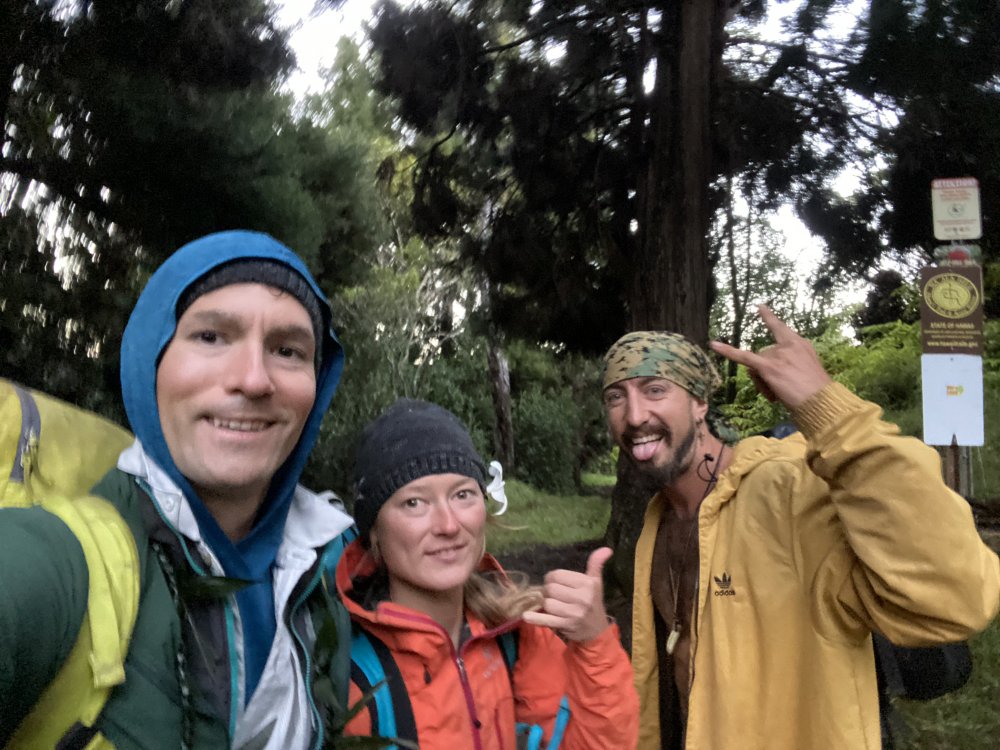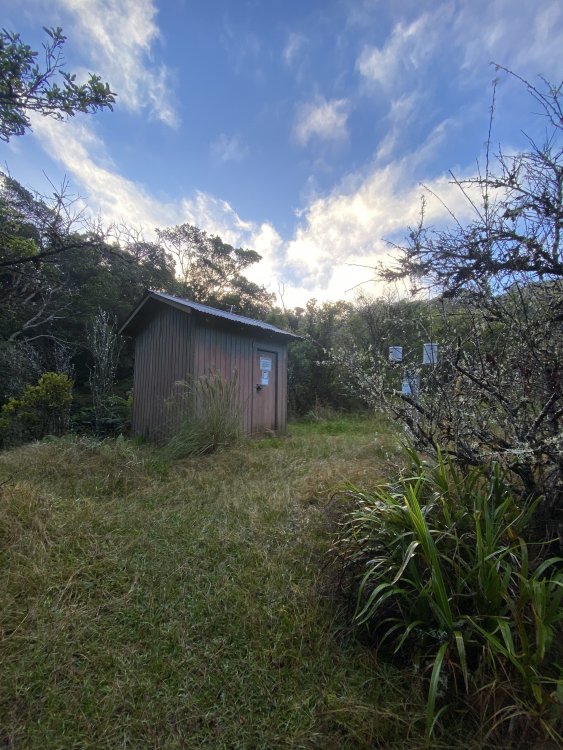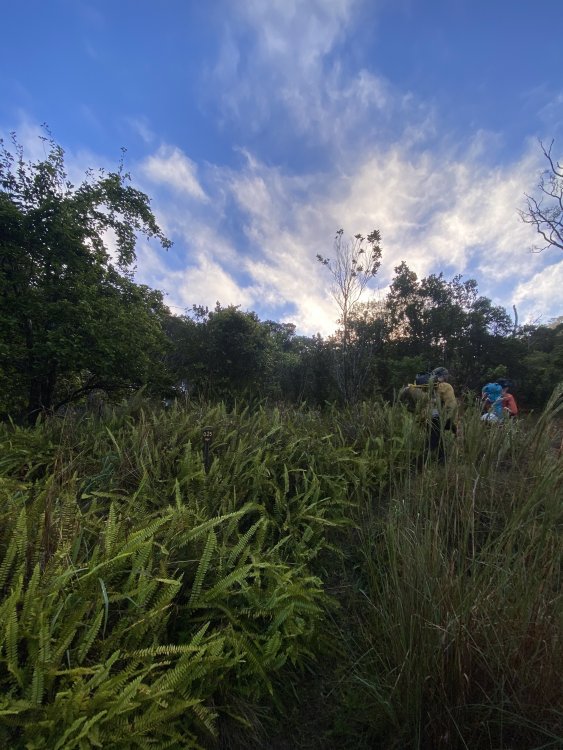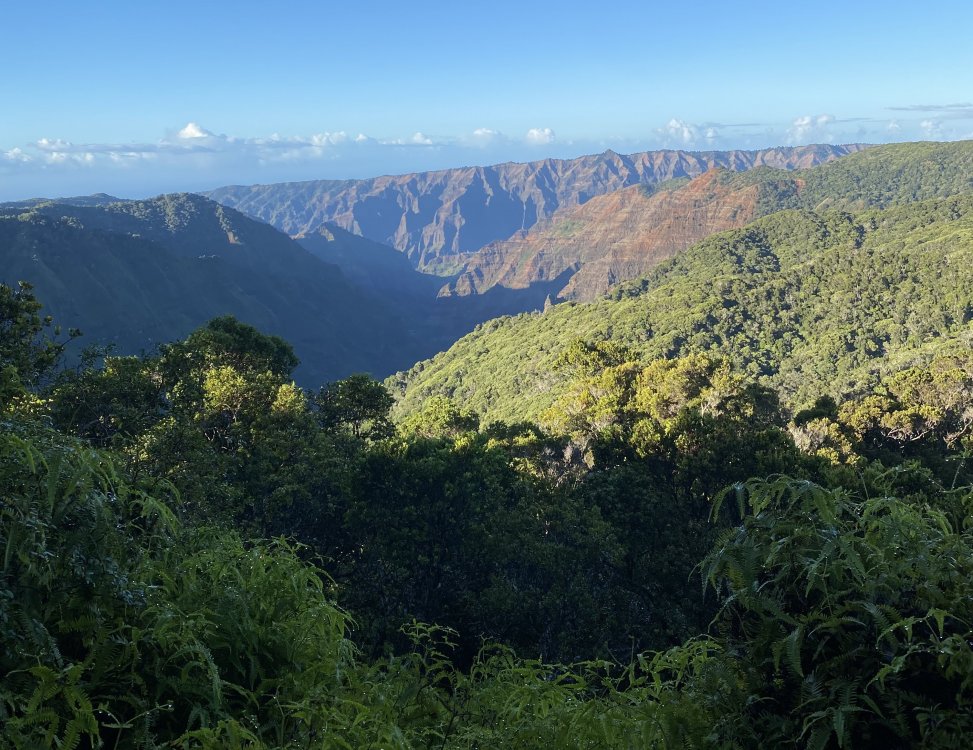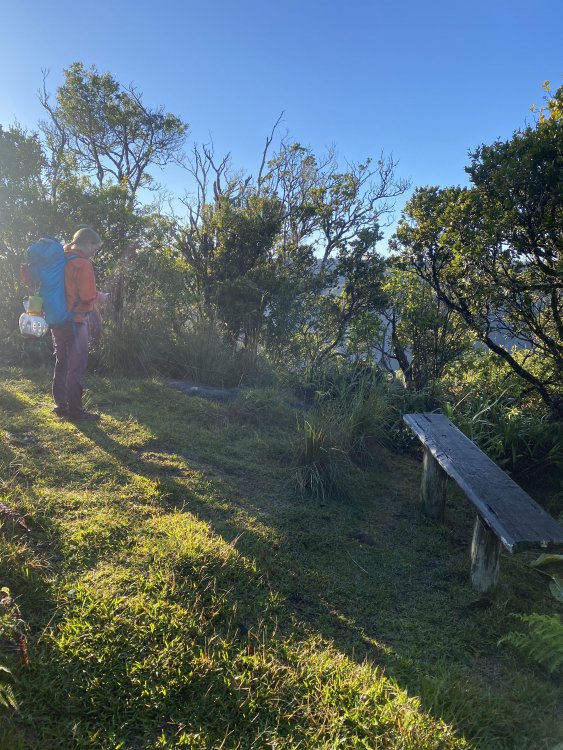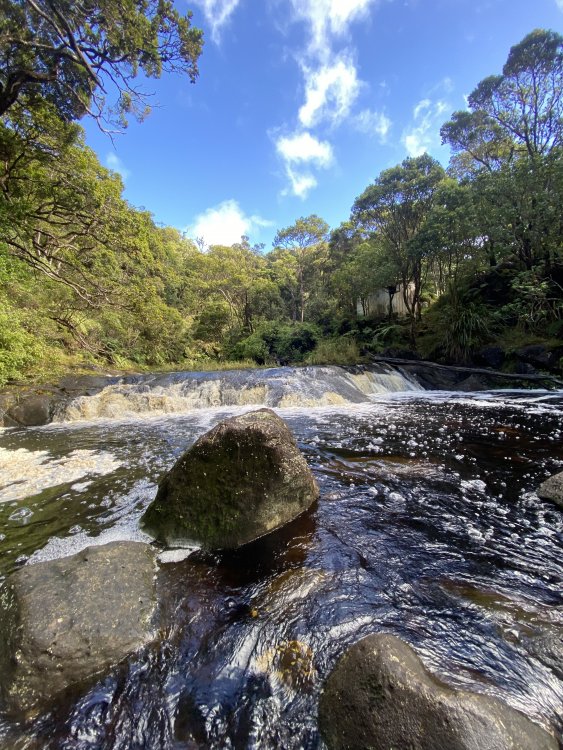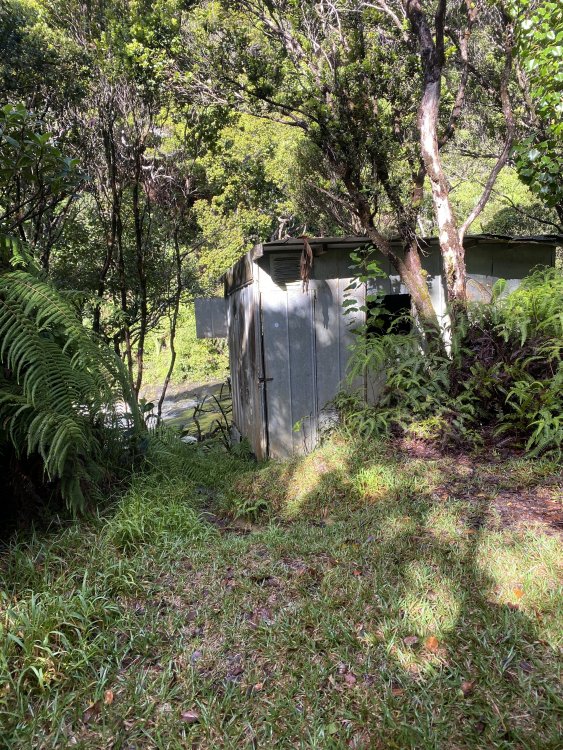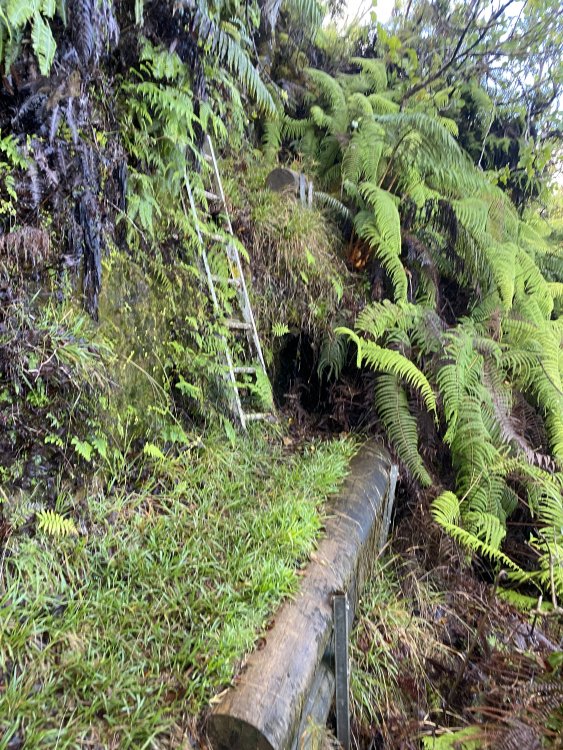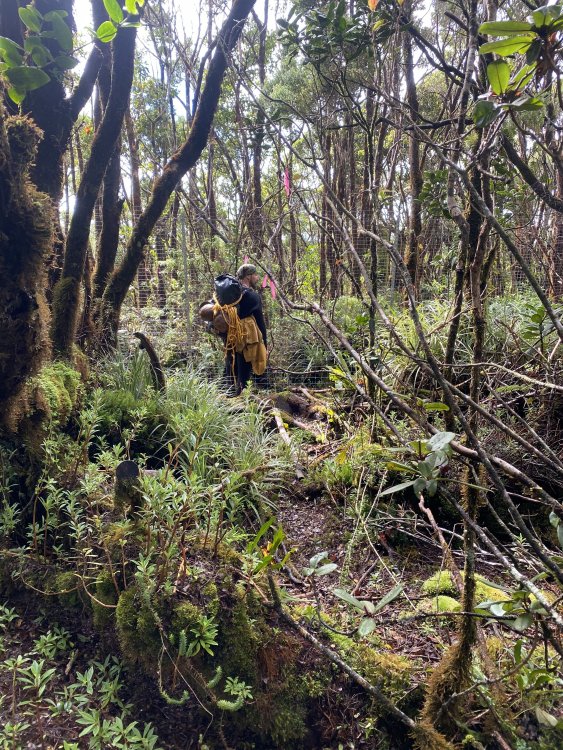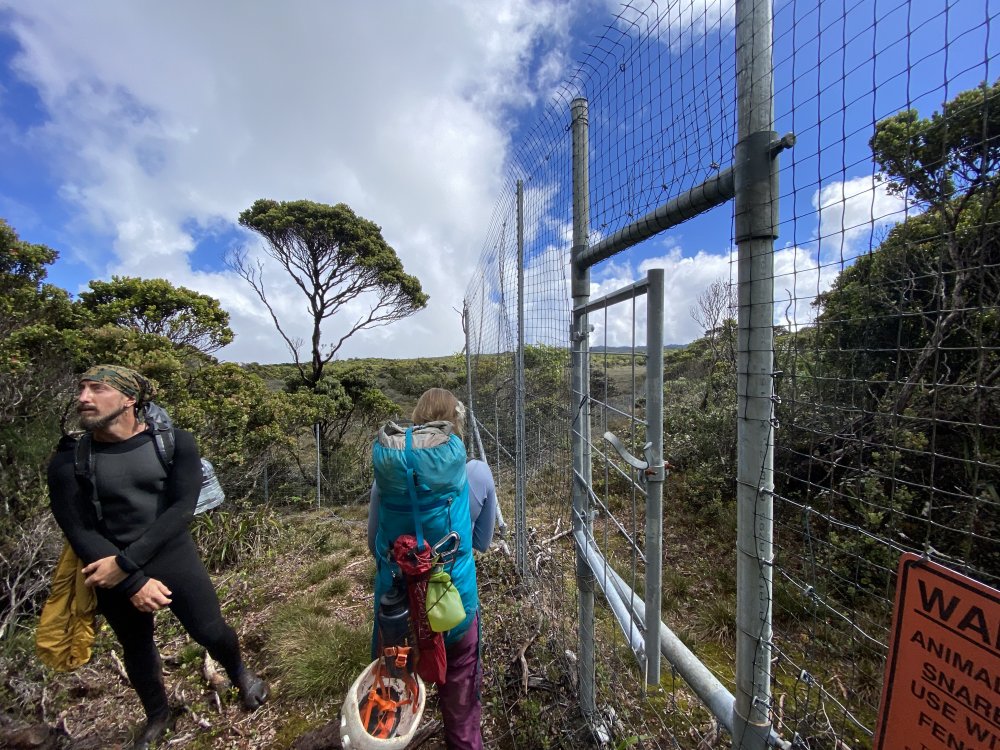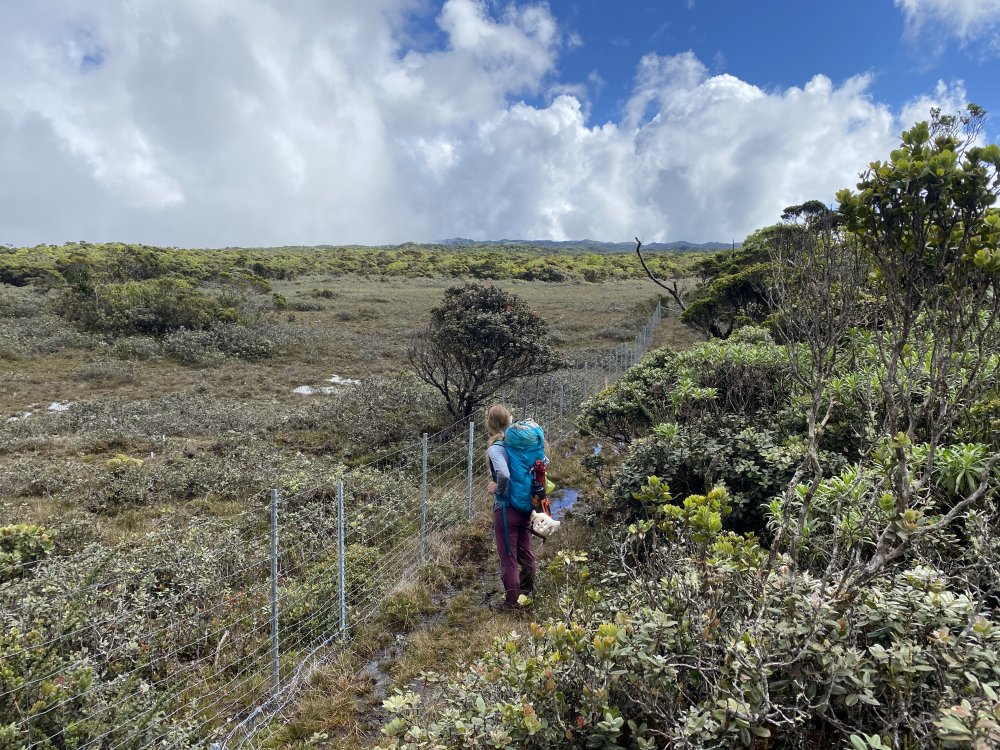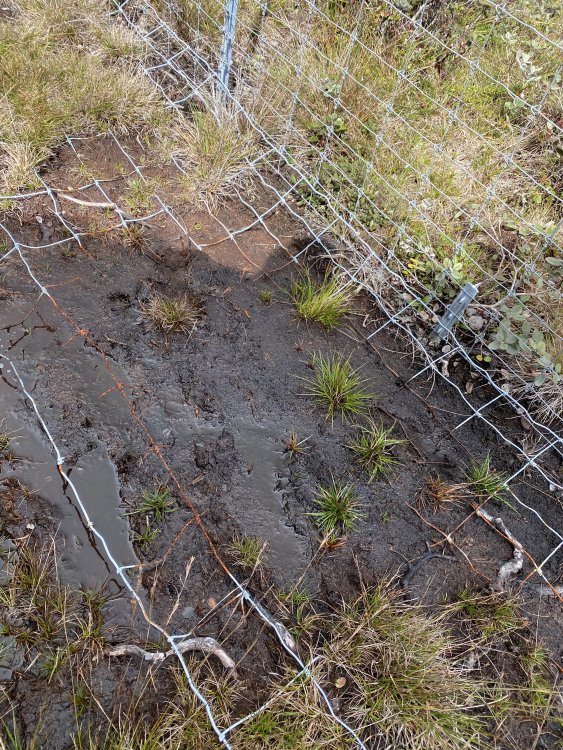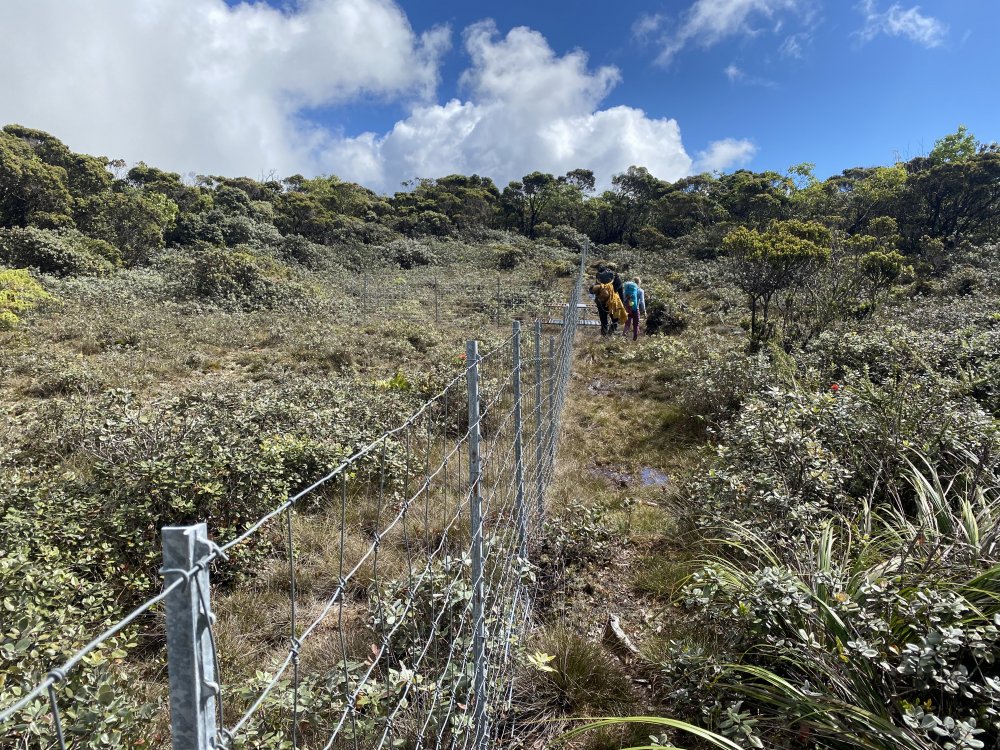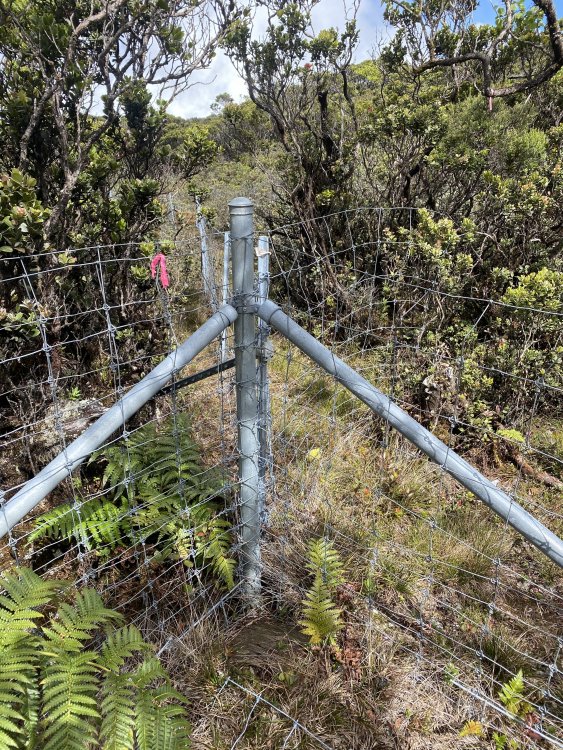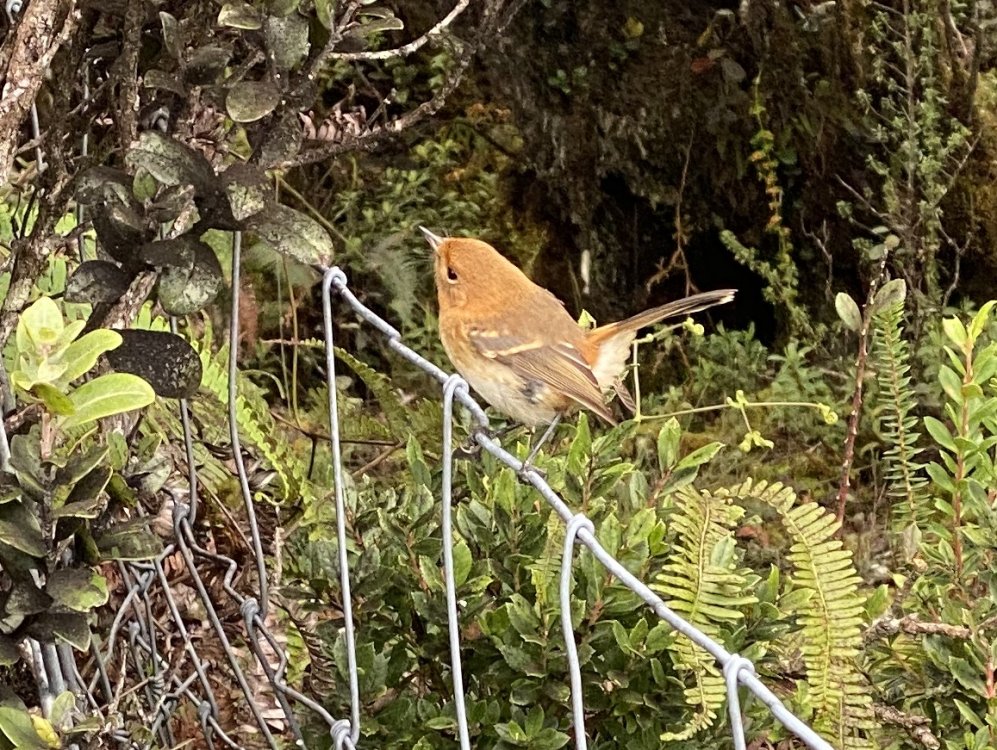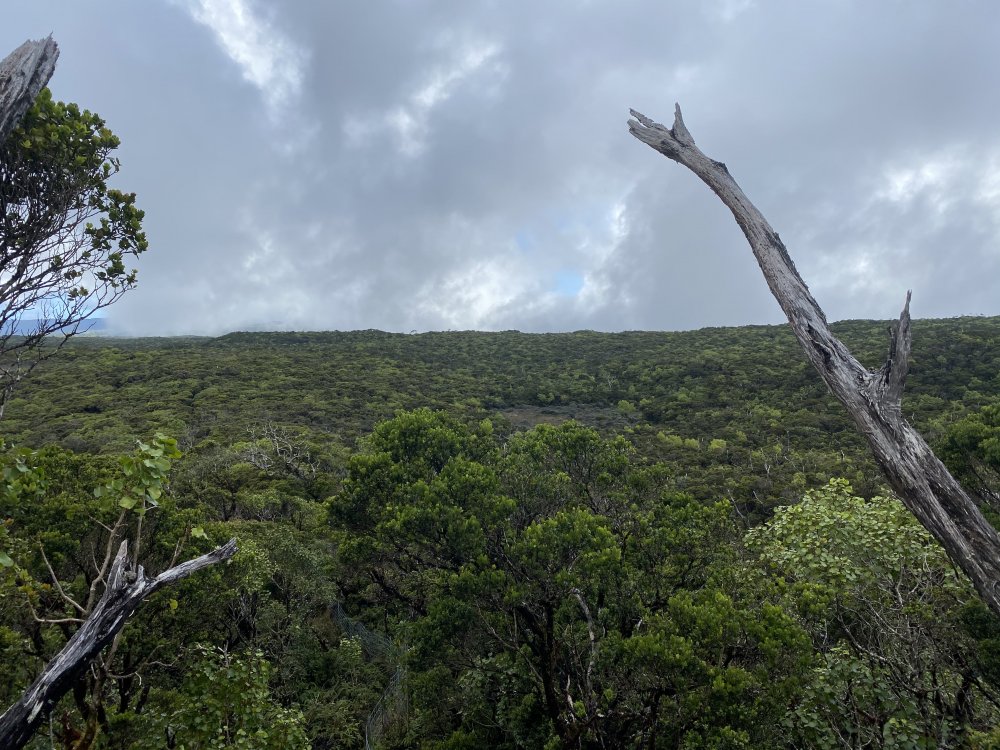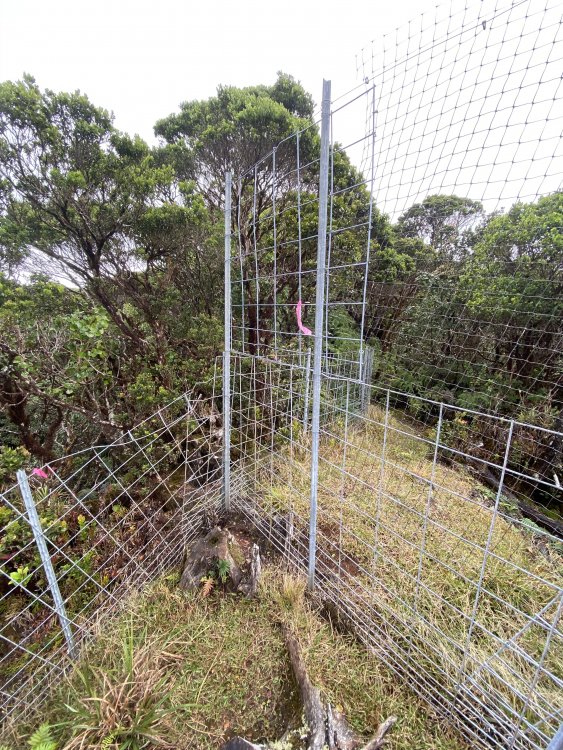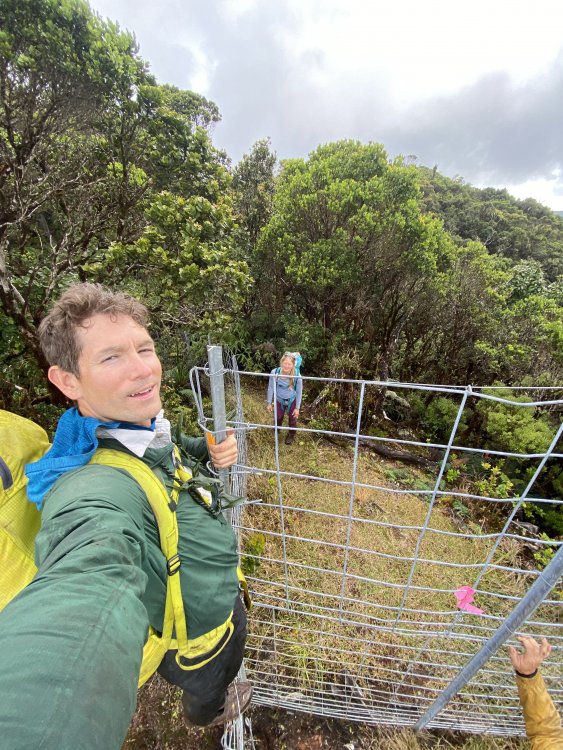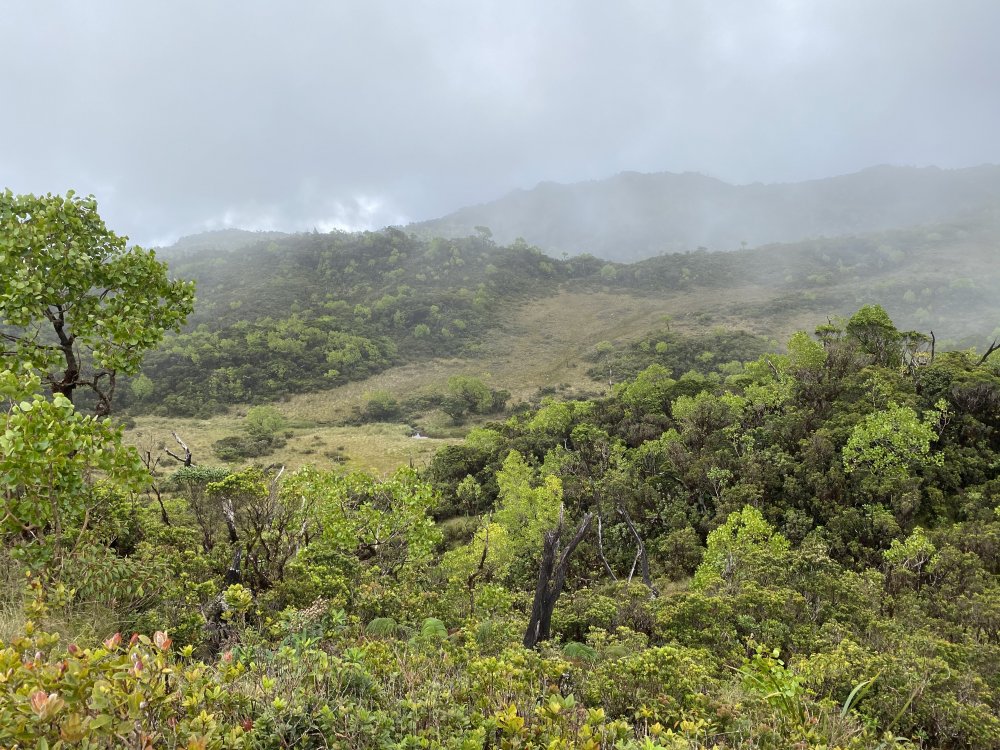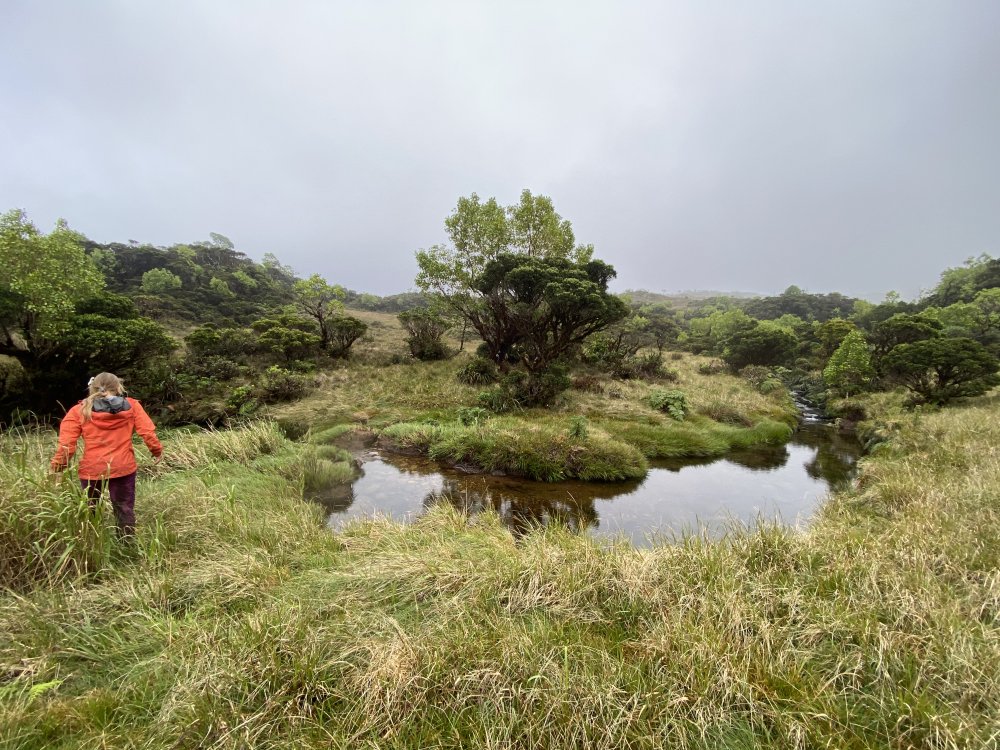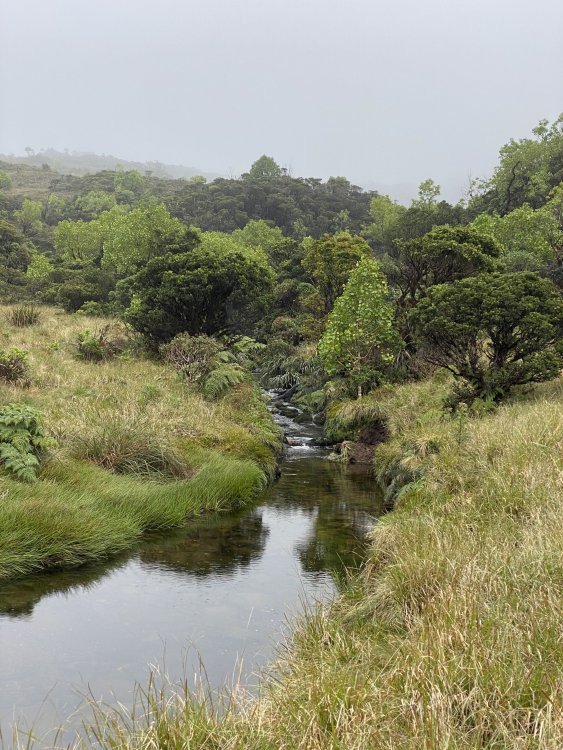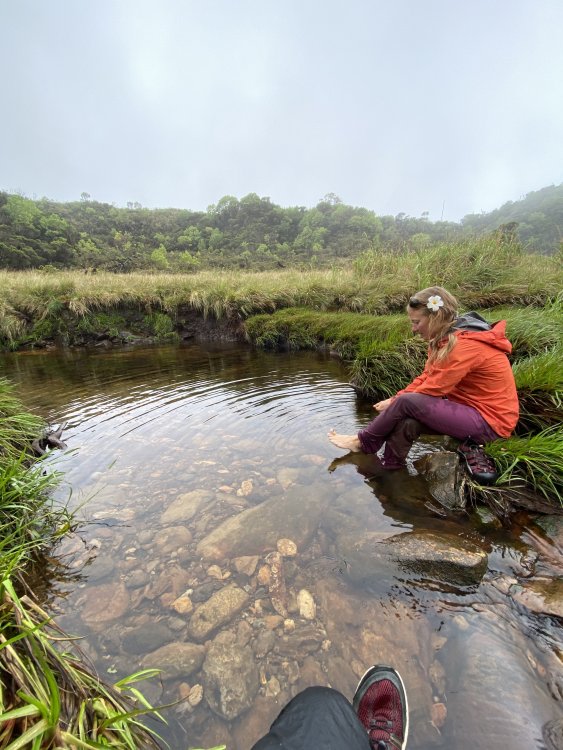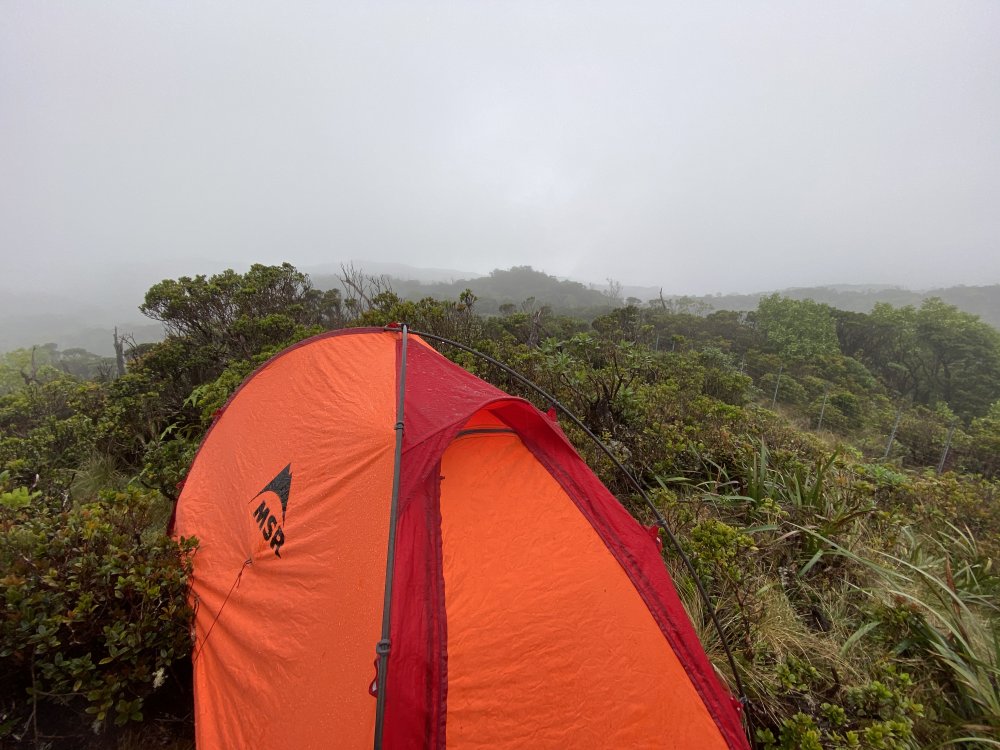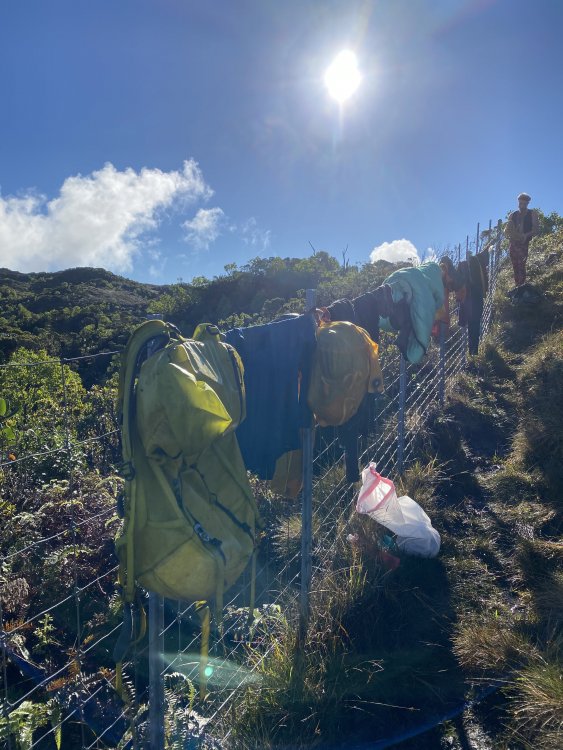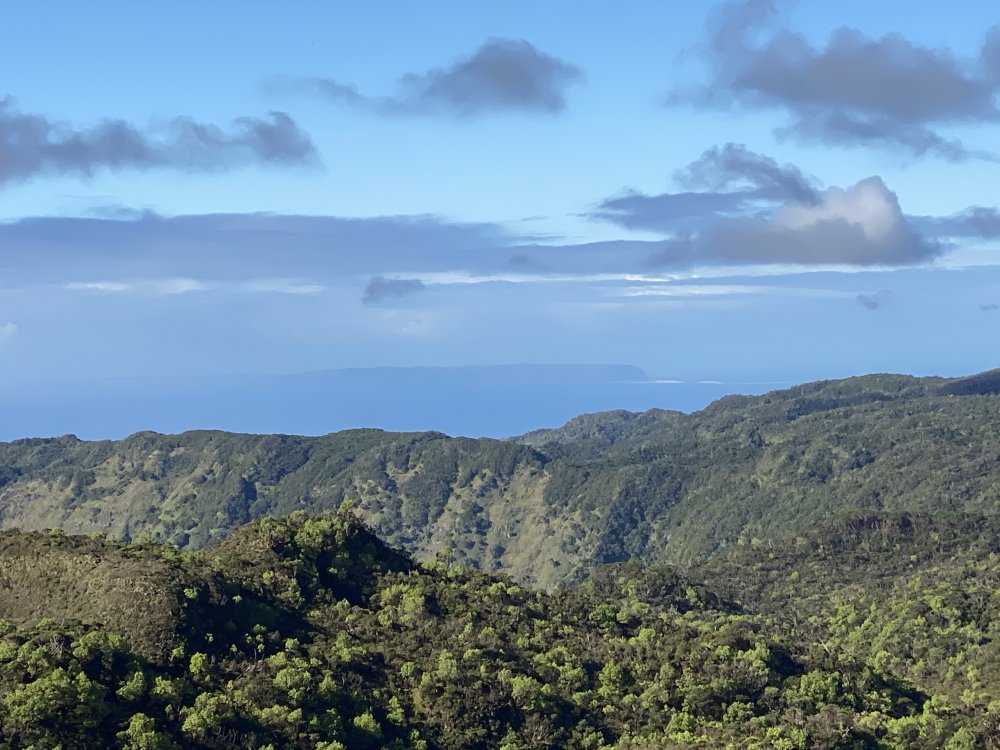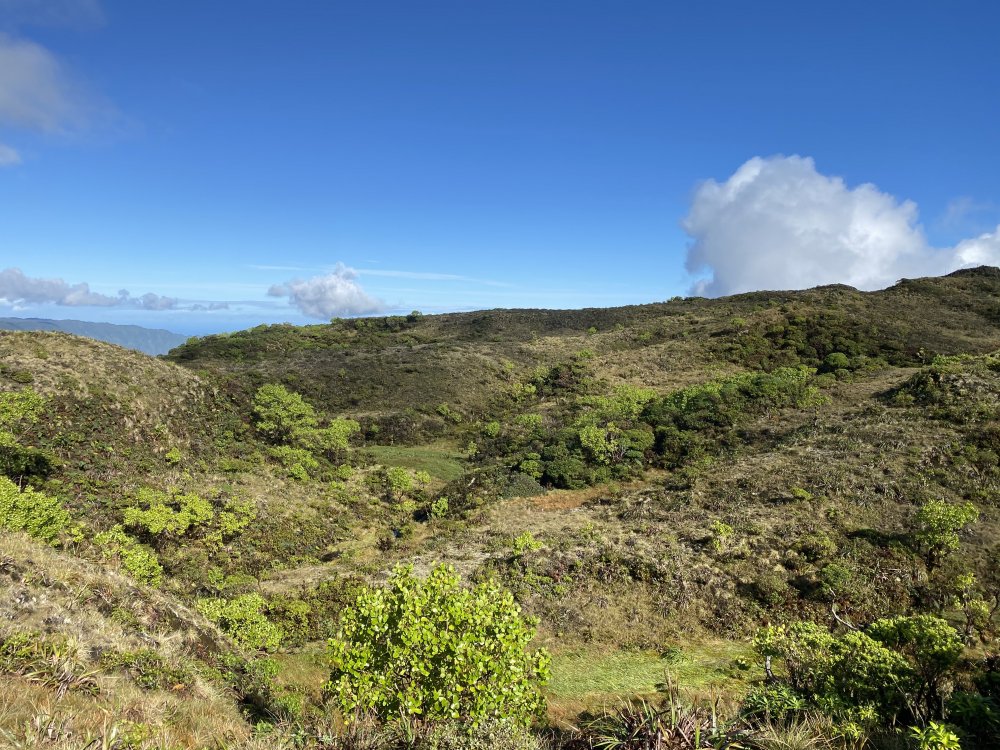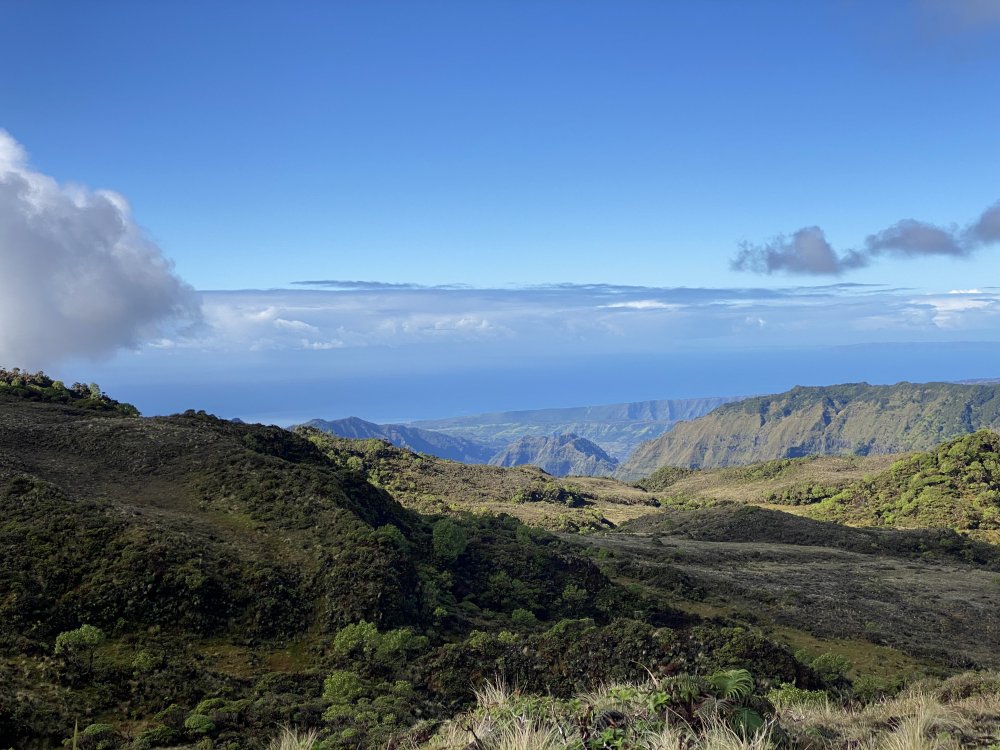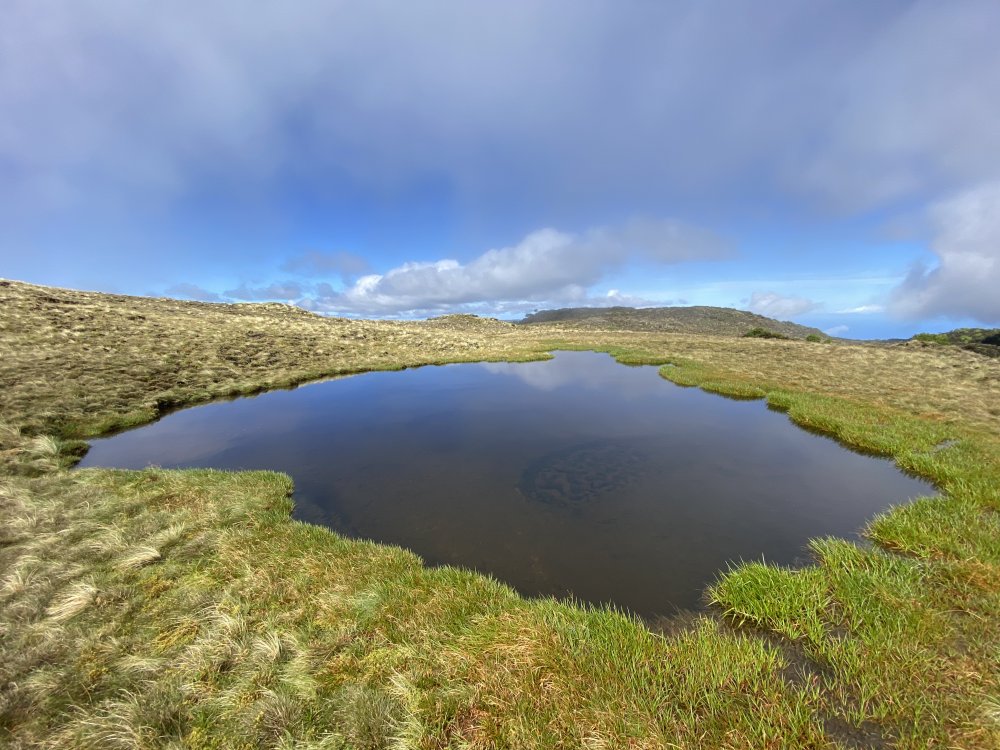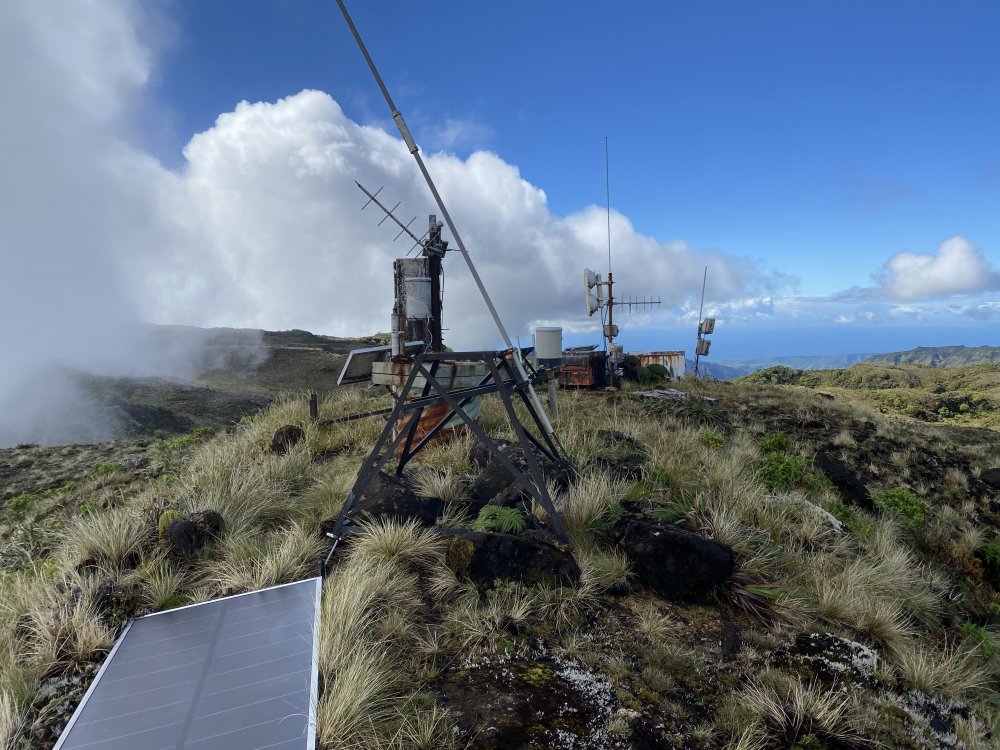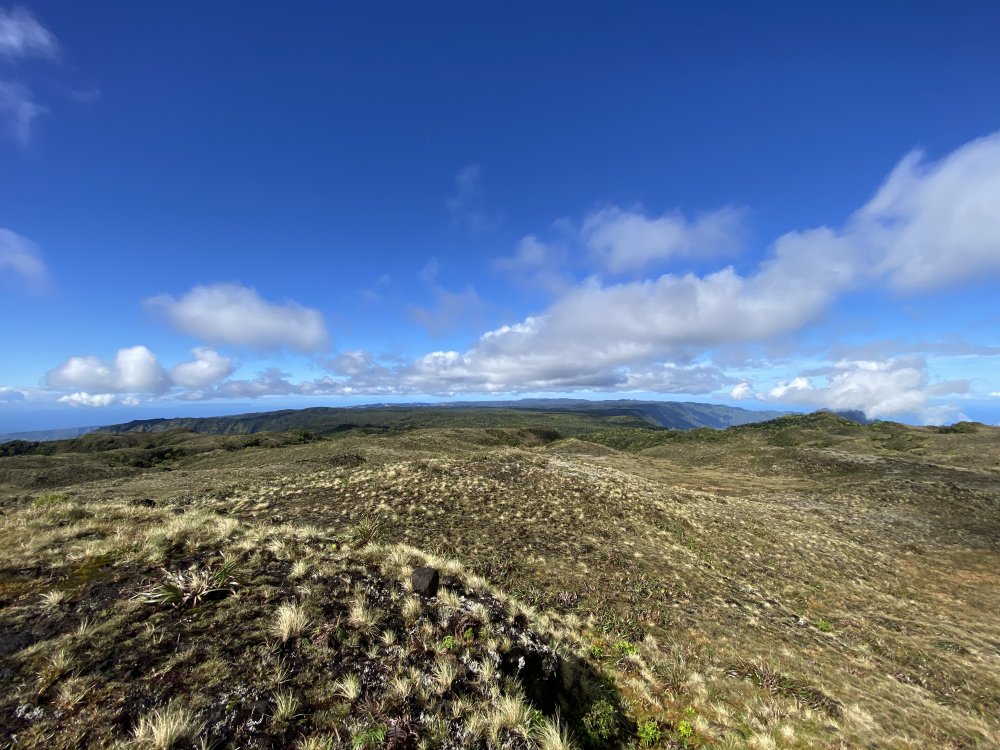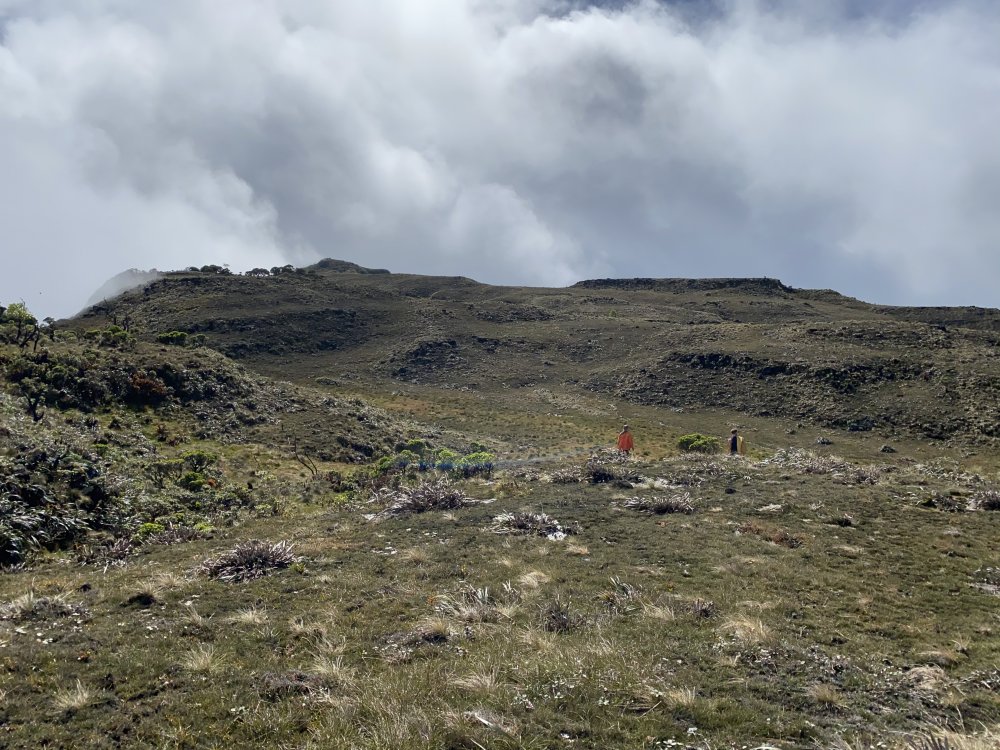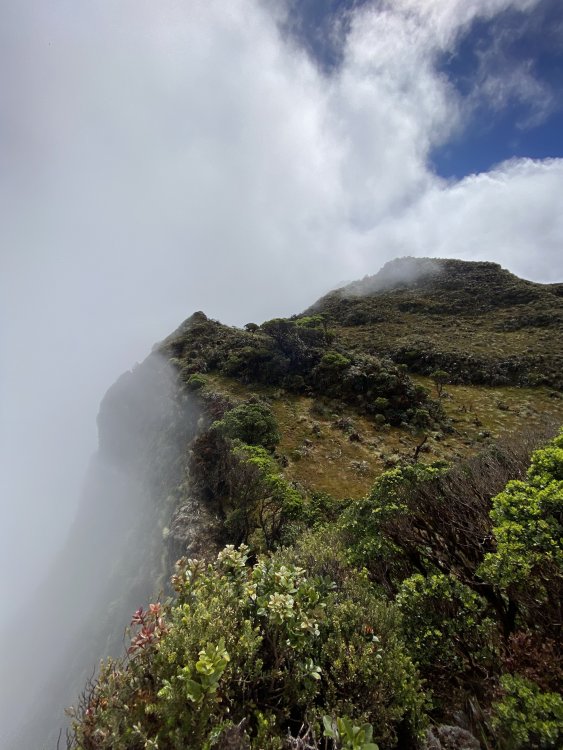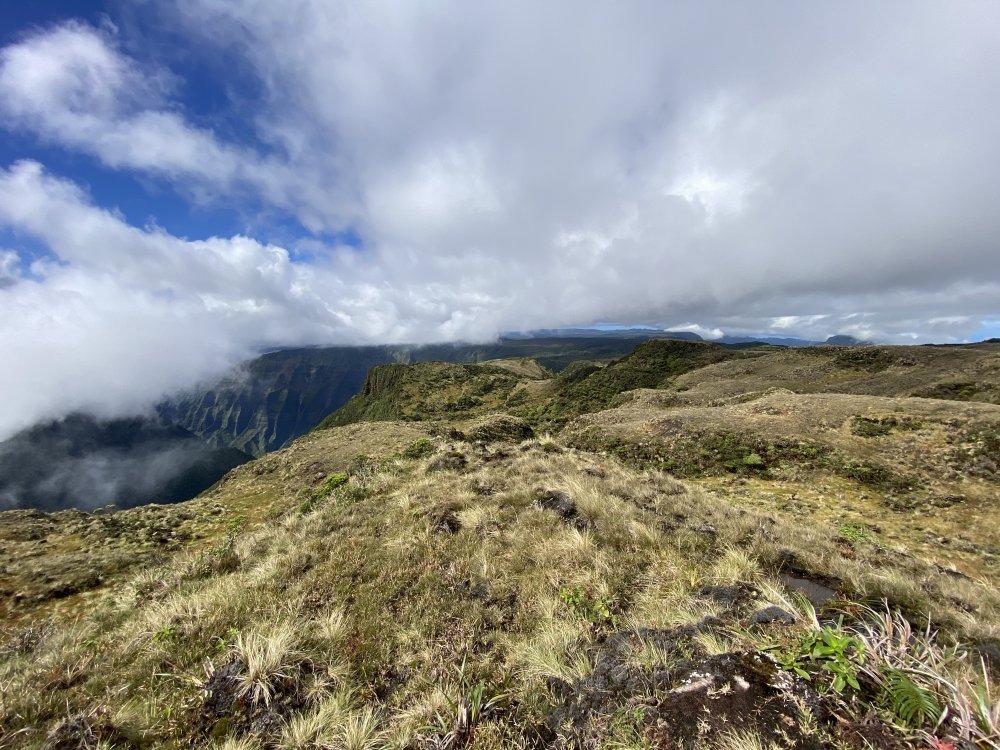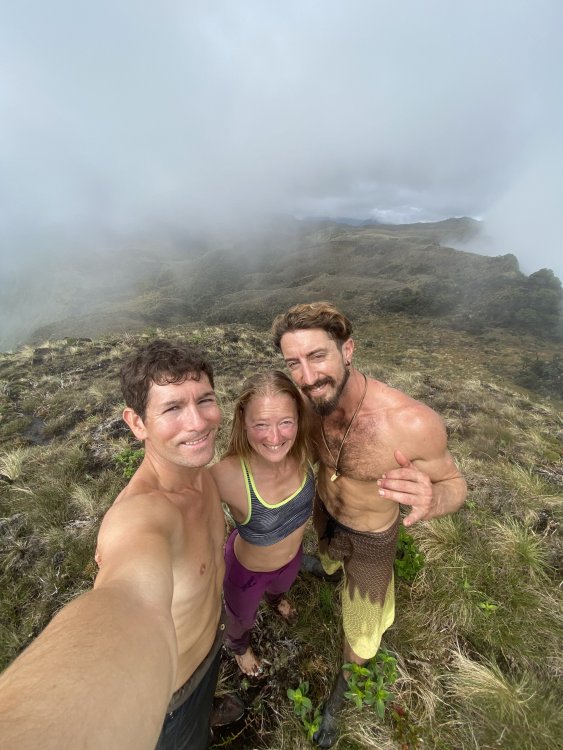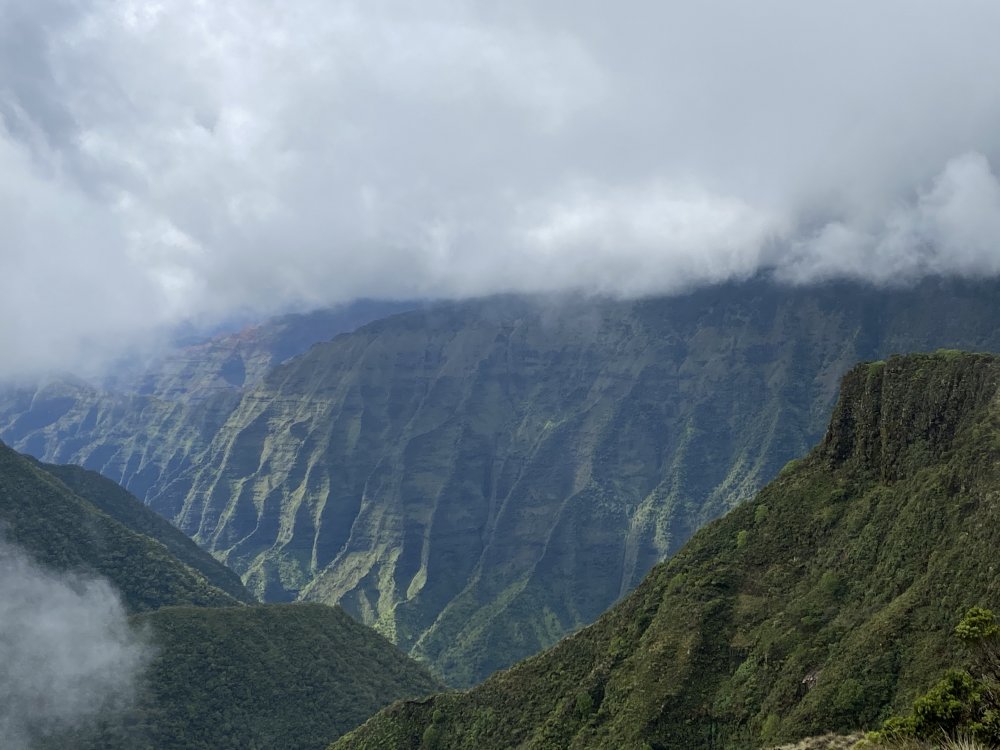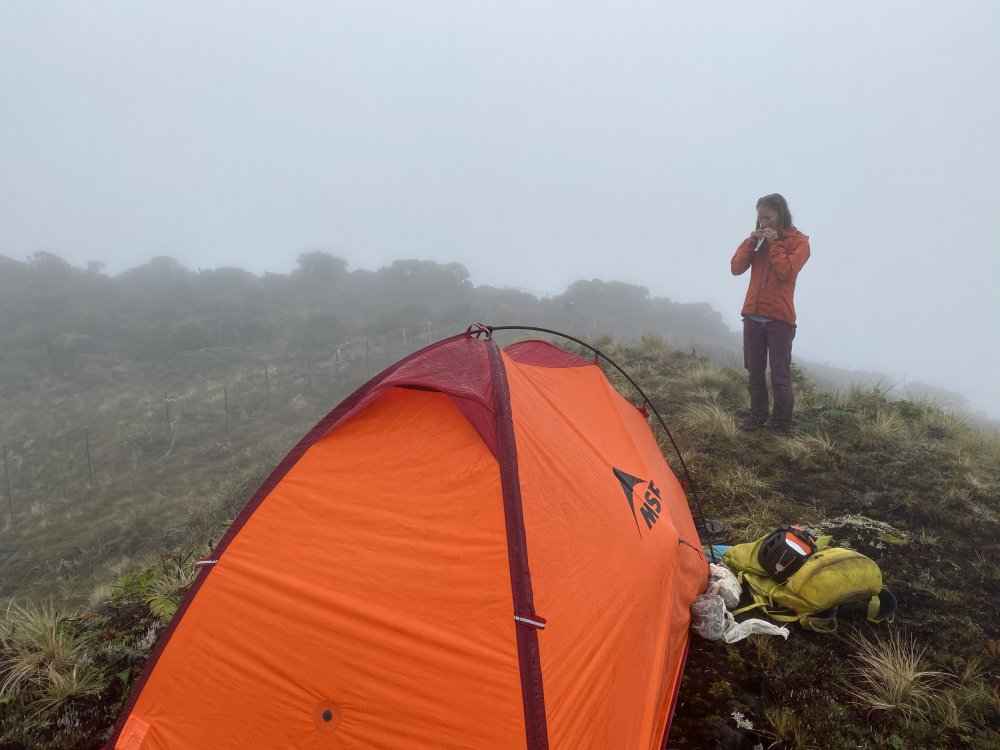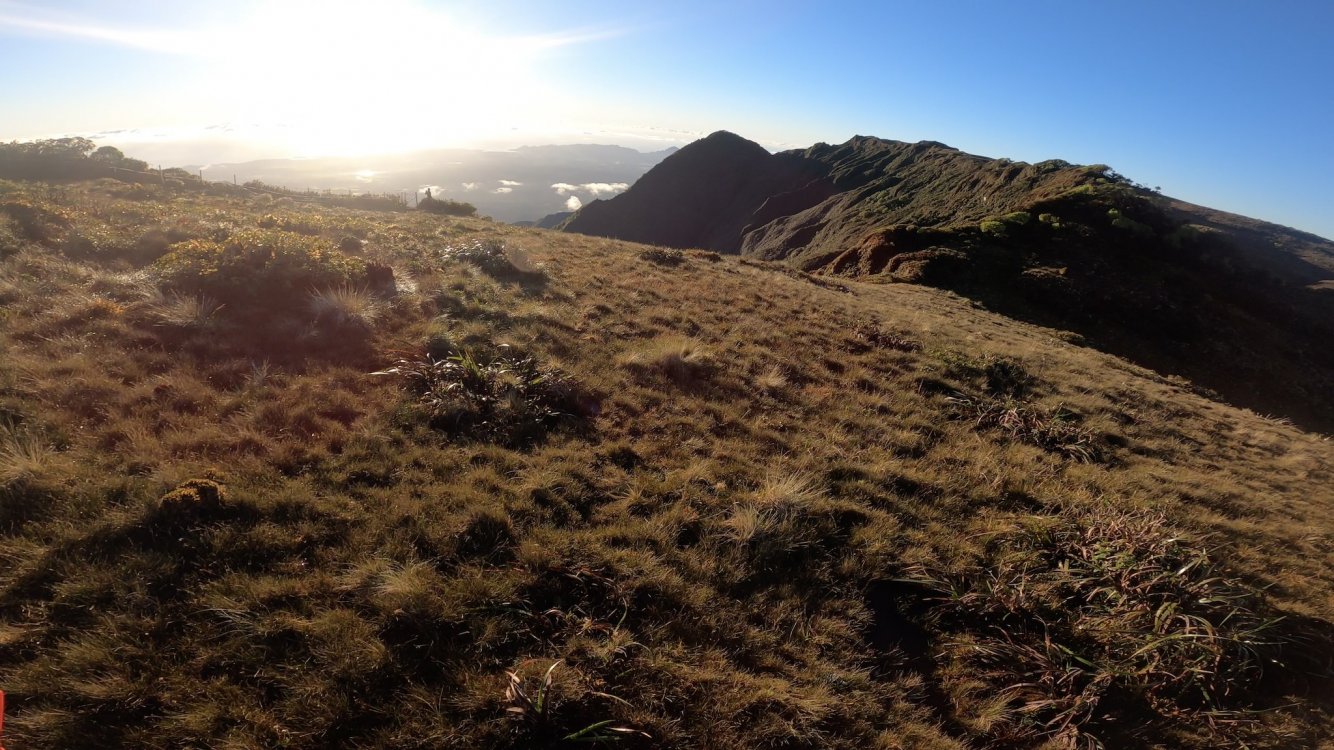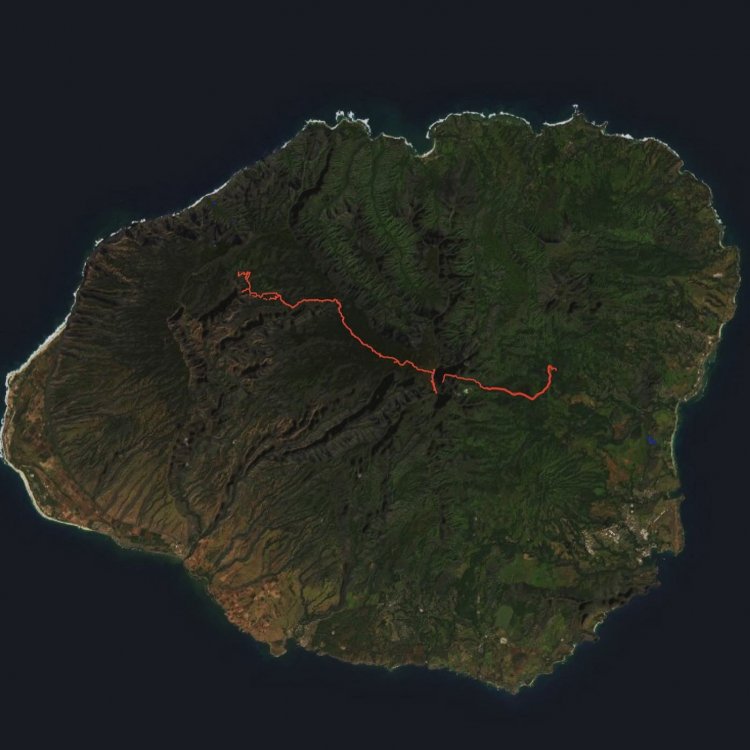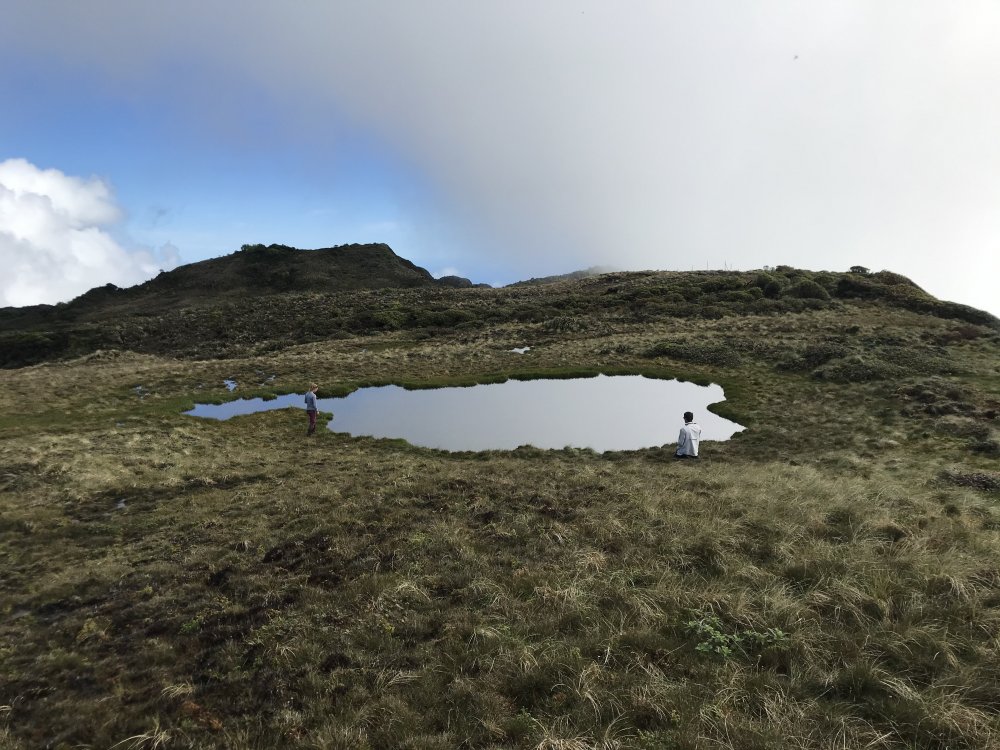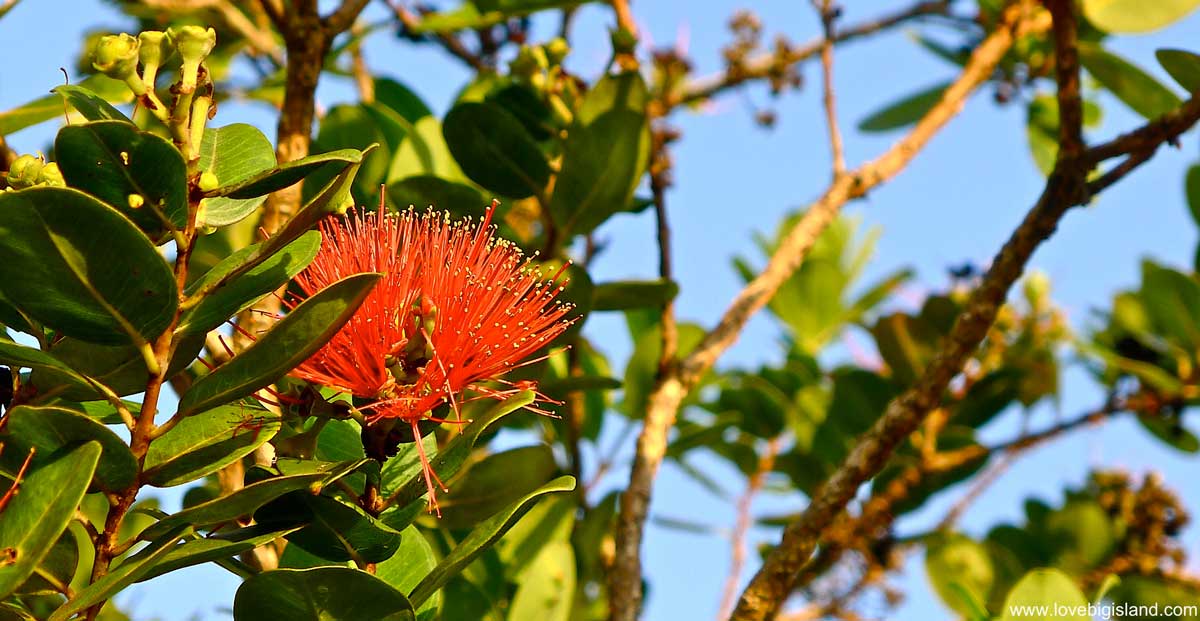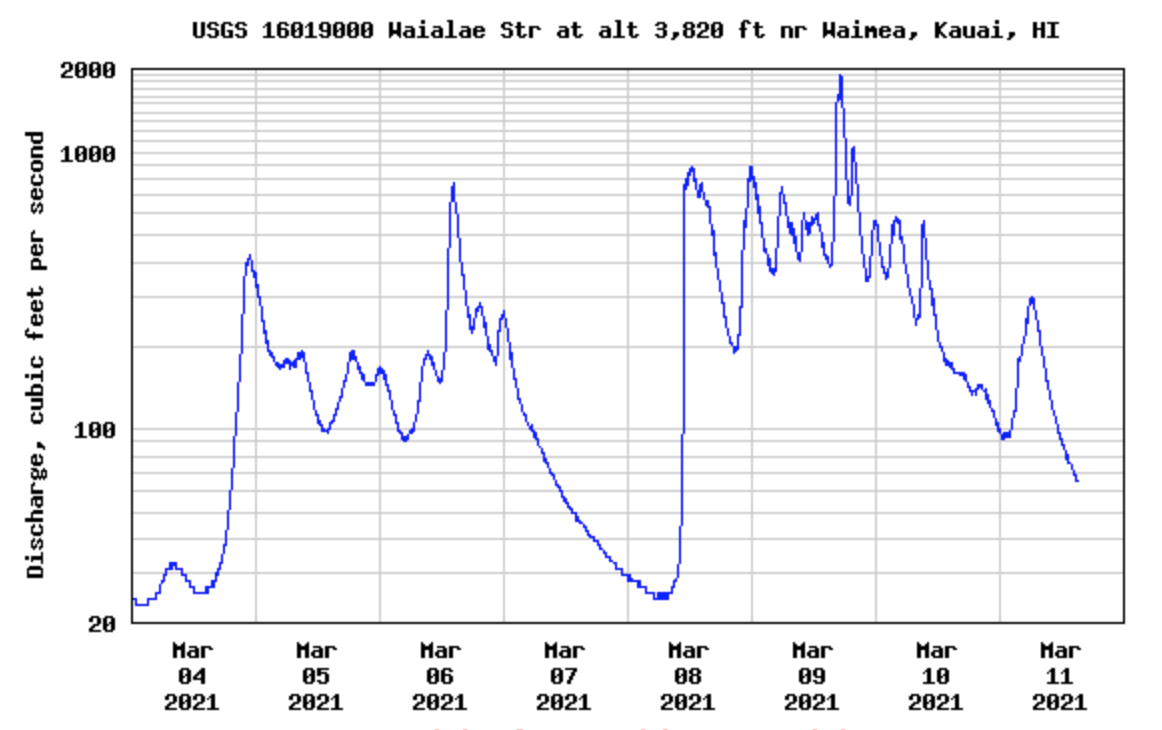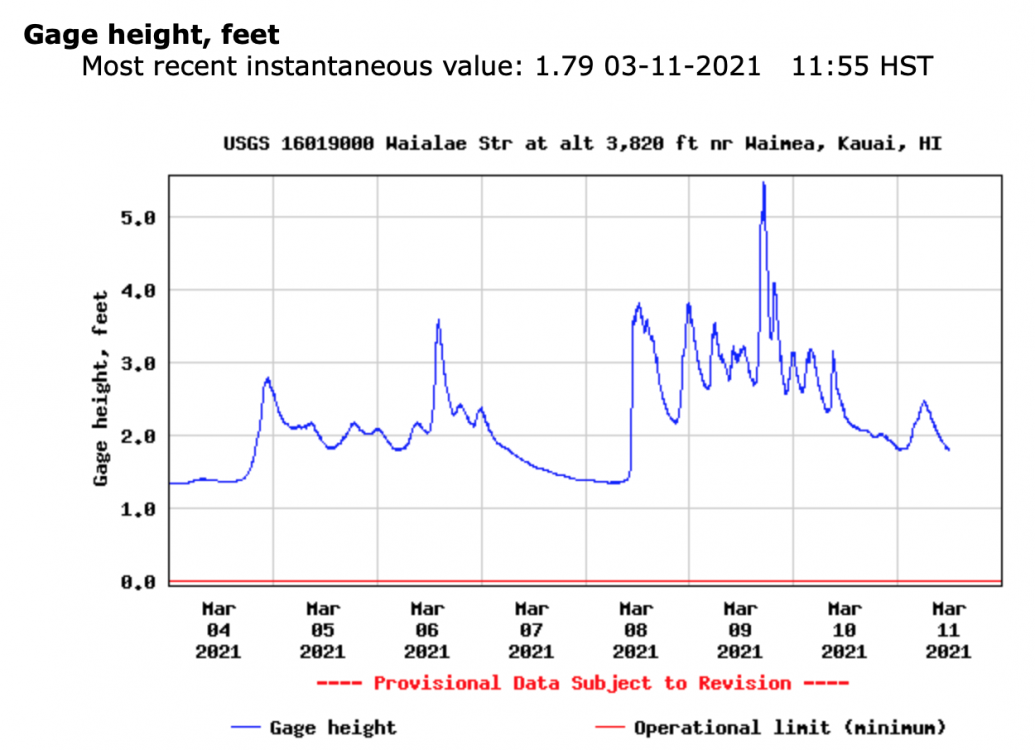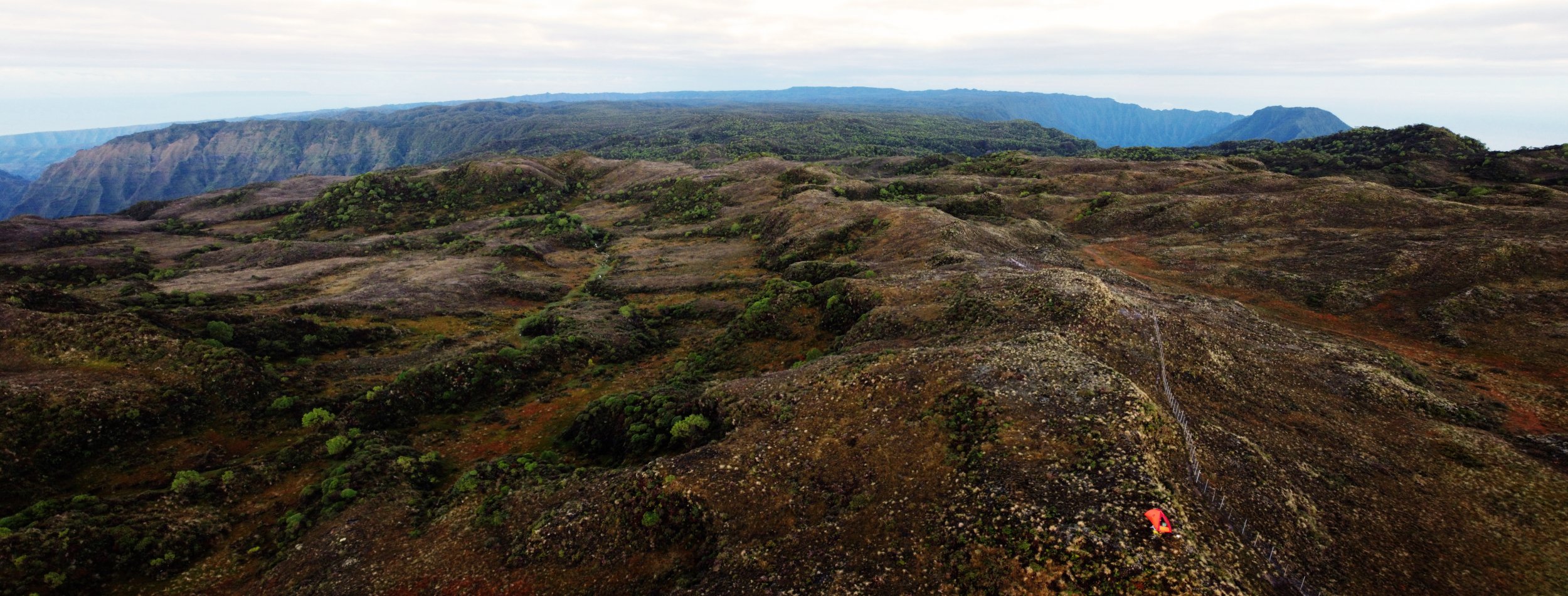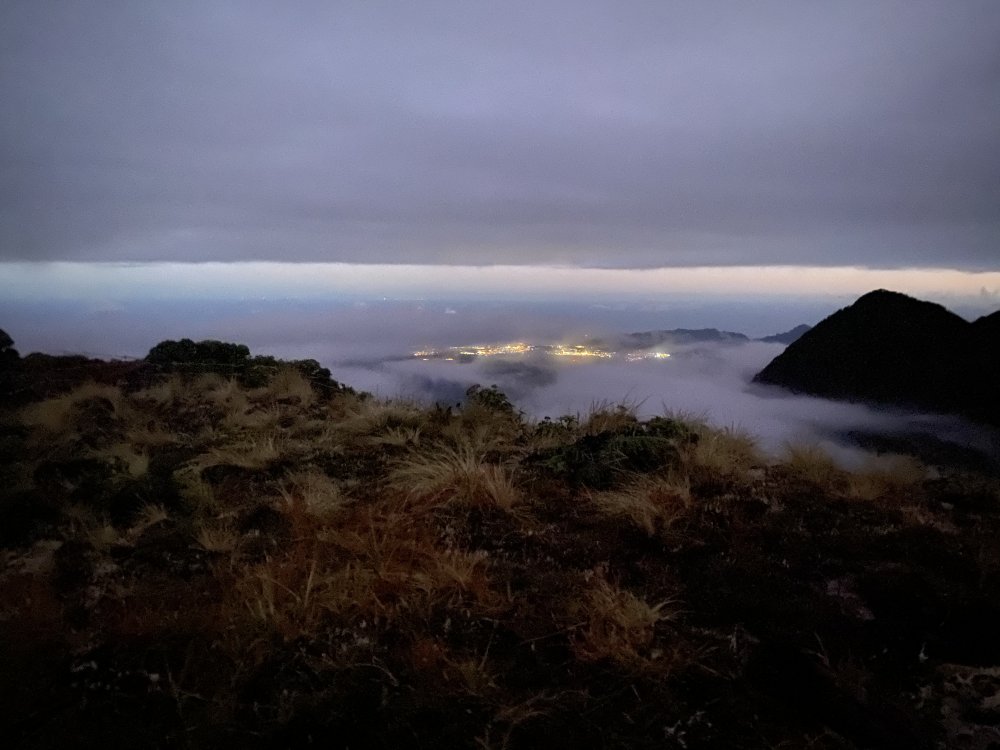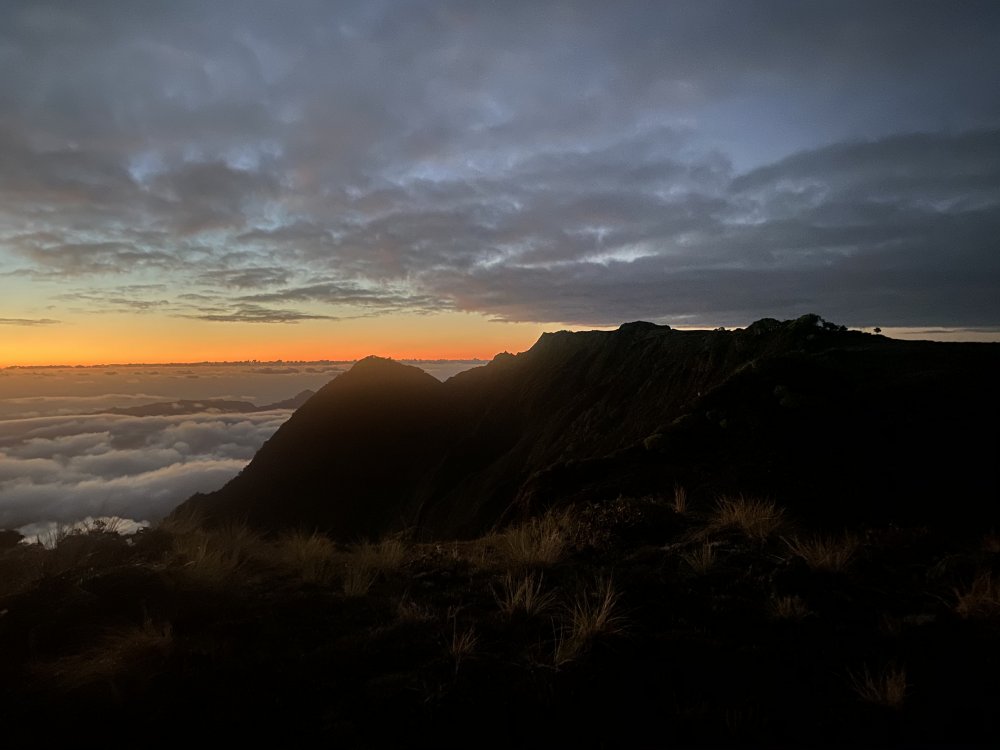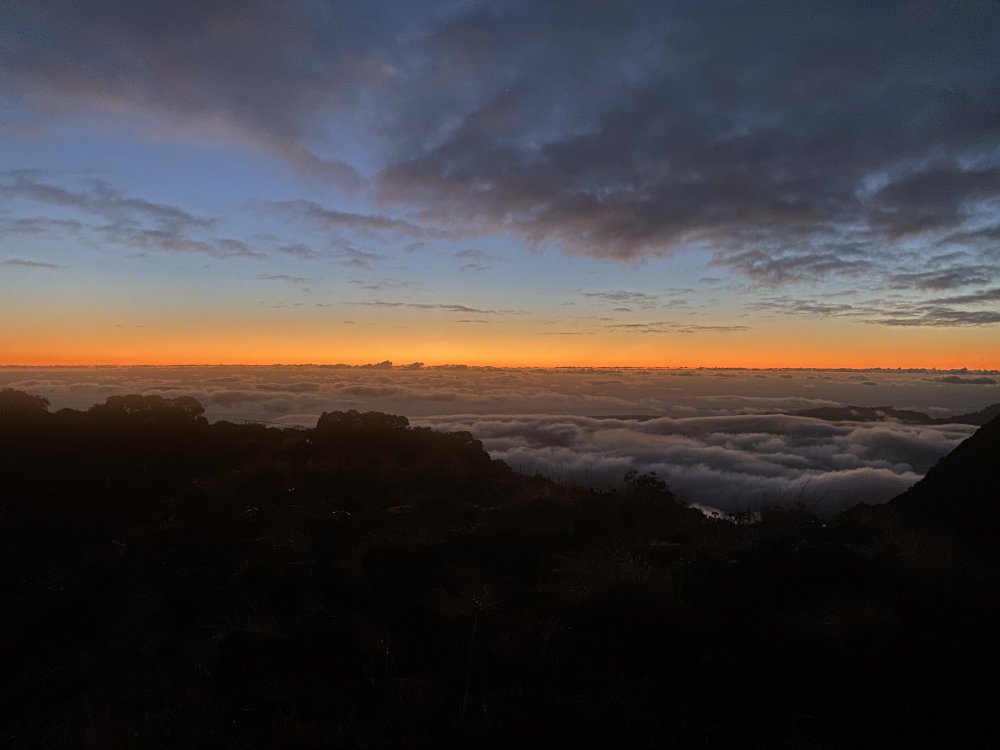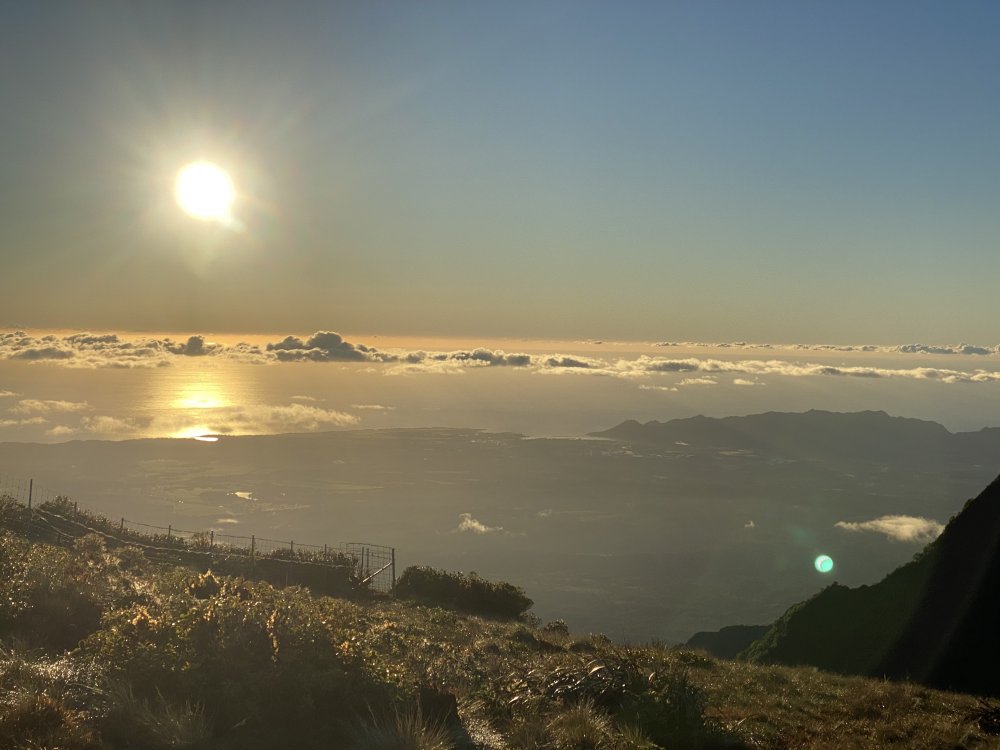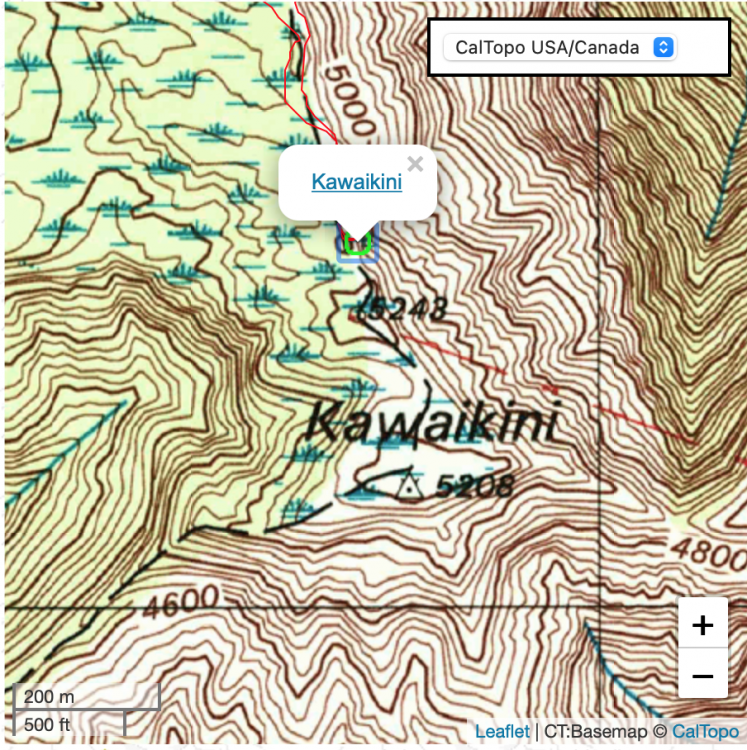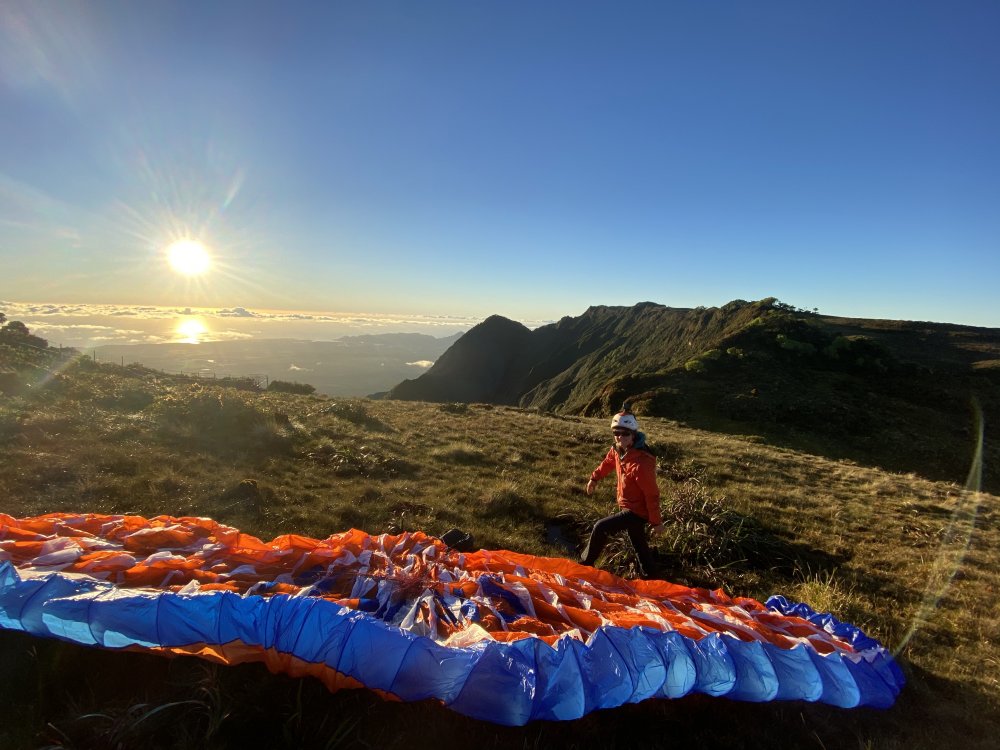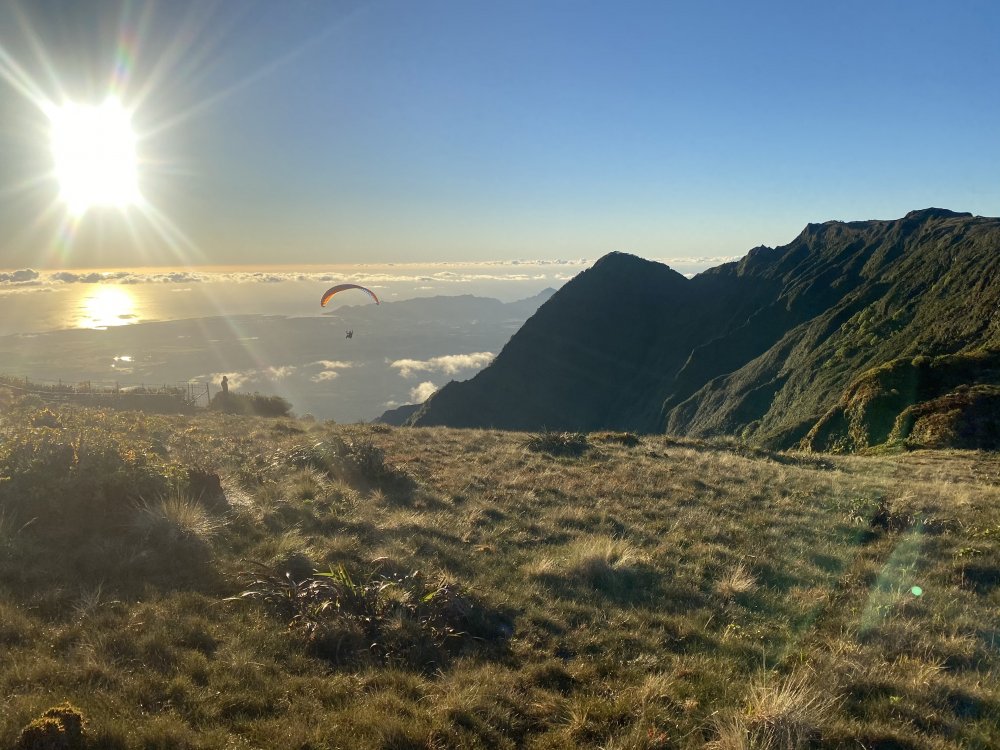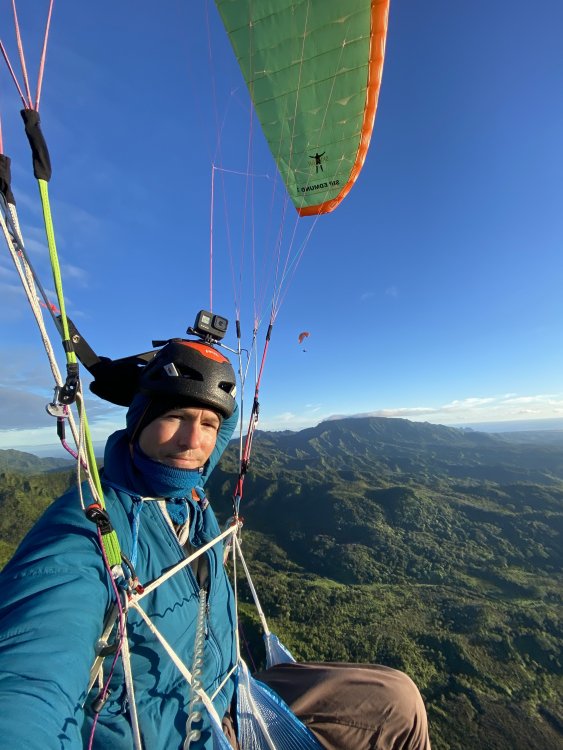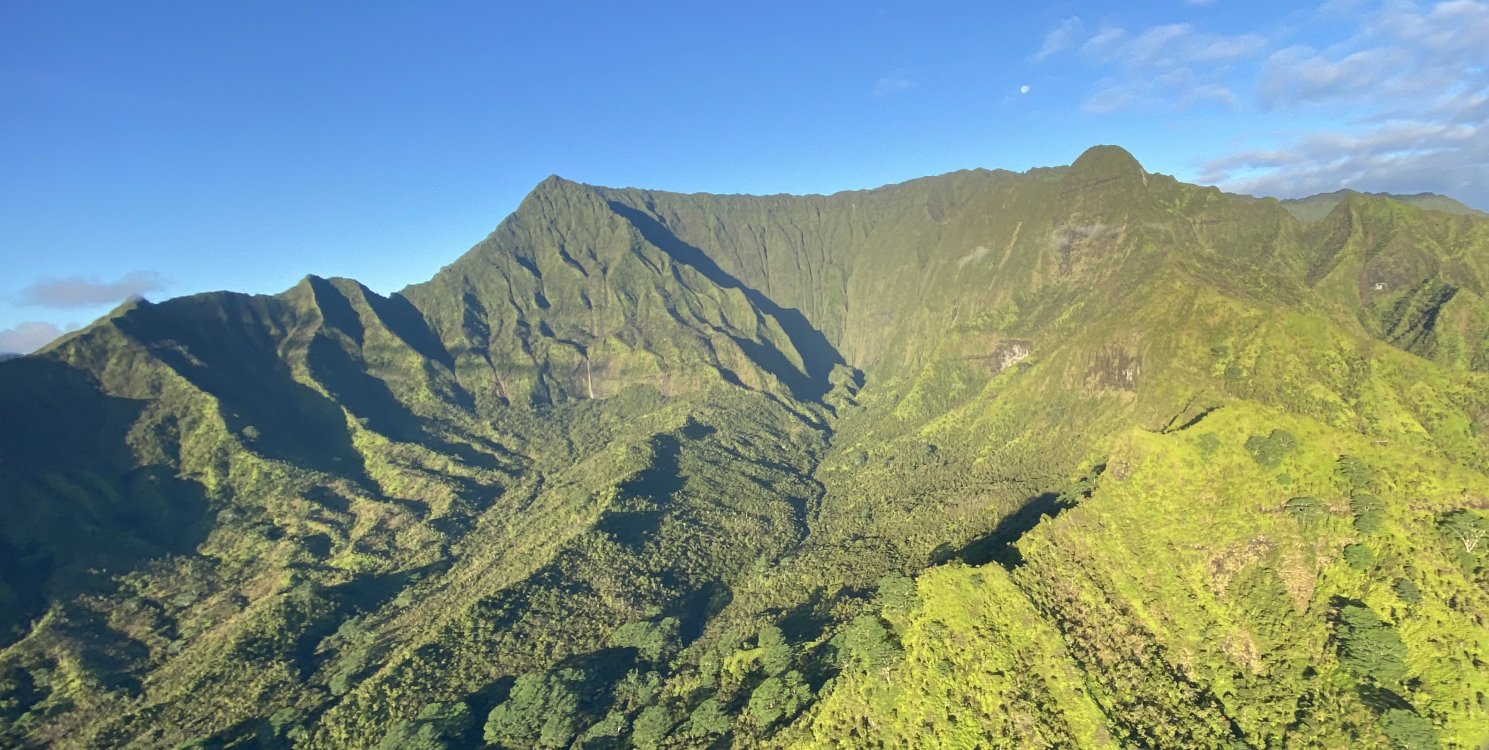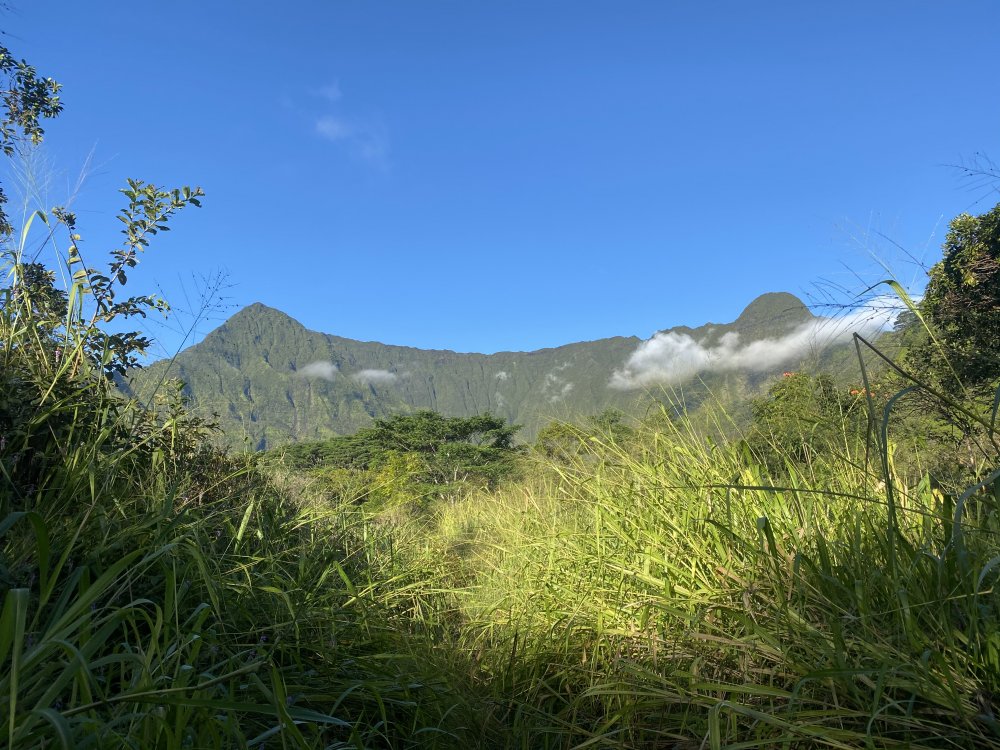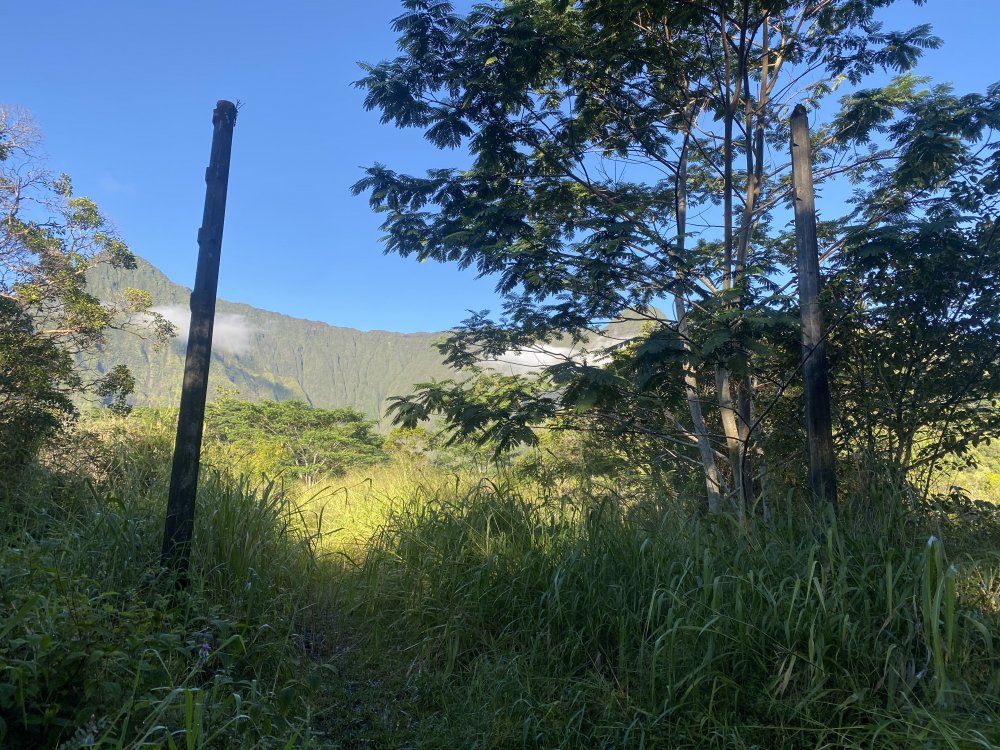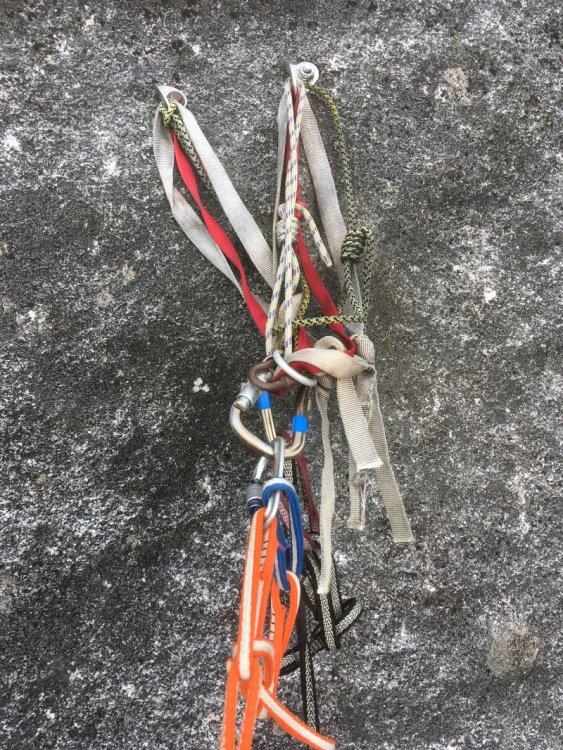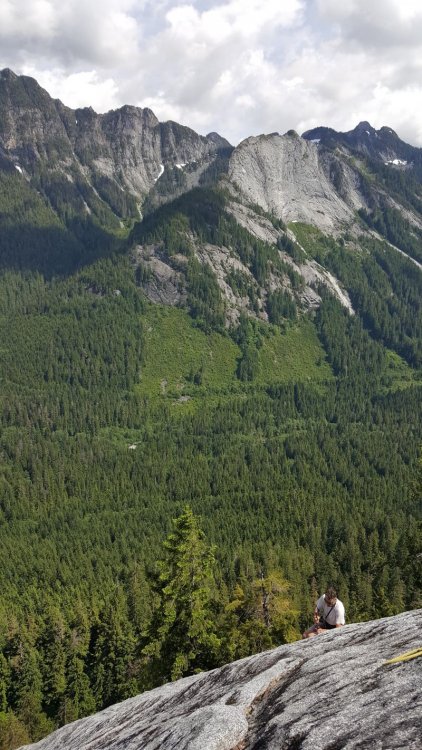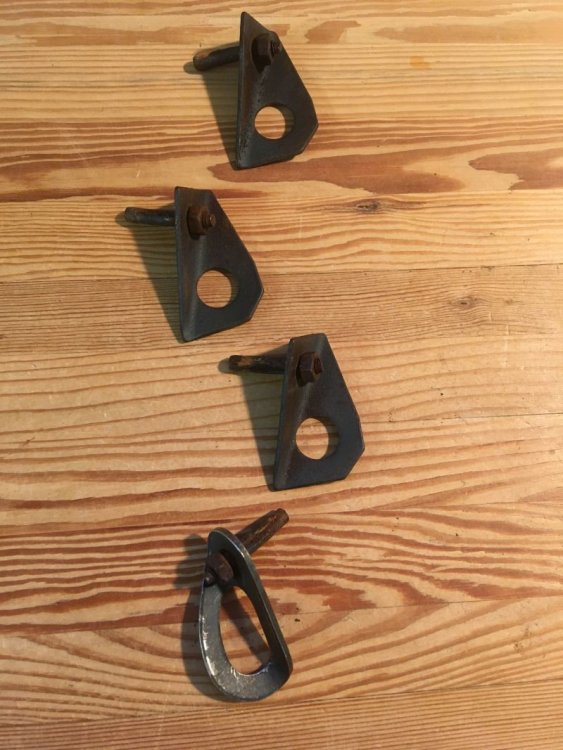Leaderboard
Popular Content
Showing content with the highest reputation on 03/13/21 in all areas
-
Trip: Wai‘ale‘ale - Alaka‘i Swamp Trip Date: 12/01/2020 Trip Report: The Summit of Kaua‘i: Kawaikini, Wai‘ale‘ale, Weeping Wall, and Blue Hole Since I was a kid, I thought of Wai‘ale‘ale as an inaccessible, spiritual place filled with adventure that only the hardest humans in history have ever visited. I never thought it would be possible to get to the center of Kaua‘i, the highest point, one of the wettest places on Earth surrounded by swamp, dense vegetation and vertiginous cliffs. Two decades since I first learned of this place, many folks have blazed a path, and the DLNR has even installed a fence line for much of the journey (intended to discourage invasive, wild boar from rampaging the inner parts of the island). The installation of the fenceline in 2011 has made the challenge much less daunting. The entire hike is located in what’s called the Alaka‘i Swamp which is a large, high (relatively flat) plateau on the Northwest side of the island. If you’ve heard rumors of heinous, hardcore adventurers going to Wai‘ale‘ale before, it’s not as serious an endeavor as the rumors make it out to be. On the flip side, if you’ve never heard of Wai‘ale‘ale, it’s WAY more serious than you can ever imagine. Chances are, if you’re on this website, you’re already a badass. This hike may be the most challenging non-technical adventure you’ll ever do…and I can’t recommend it enough! I’ve devoured every bit of information on this hike with a Bibliography at the end, and hopefully this can serve as a single source for everything you need to know about getting to Wai‘ale‘ale. Stats on Wai‘ale‘ale -Dirt Road (Mōhihi-Camp 10 Rd): 12.2 miles round trip. 1000ft of gain and loss each way. -Trail from Mōhihi-Wai‘alae Trailhead to Kawaikini: 23.3 miles round trip. Going towards Kawaikini includes over 2200ft elevation gain and over 950ft loss. Stats on Blue Hole/Weeping Wall -Loop Road (Keahua Arboretum to Jurassic Park Gates and Blue Hole/Weeping Wall Trailhead): 9.8 miles round trip. Going towards the trailhead includes over 1,000ft elevation gain and 500ft loss. -Hike to Blue Hole/Weeping Wall: 4.86 miles round trip. Going to Weeping Wall includes over 1,350ft elevation gain and 50ft loss. Tracks https://caltopo.com/m/KK6B Here is a link to all four GPS tracks: -Road to Wai‘ale‘ale: 4x4 Mōhihi-Camp 10 Road (red) -Hike to Wai‘ale‘ale: Trail to Wai'ale'ale pond and Kawaikini (orange) -Road to Weeping Wall: 4x4 Loop Road to Jurassic Park Gates (red) -Hike to Weeping Wall/Blue Hole (blue) Summary Over three days (Nov 30 – Dec 2, 2020), myself (Jeff) and my wife, Priti, traversed up and over the island, summiting the highest point of the island (Kawaikini), then paraglided off near the shores of the sacred Wai‘ale‘ale pond, landing at the film location of the Jurassic Park Gates (the beams are still in place today). For the Wai‘ale‘ale hike, we were joined by a friend who took video of our takeoffs and expertly drove us to the Mōhihi-Wai‘alae trailhead. After landing, Priti and I headed back towards the mountain, from whence we came, along the Wailua River towards its source, Weeping Wall, 3,000ft directly below Kawaikini, passing Blue Hole along the way where three rivers converge. Wai‘ale‘ale and Weeping Wall are two completely distinct hikes that I’ll explain separately. Wai‘ale‘ale is the seldom-visited, central high point of the island, reached from the West through the Alaka‘i Swamp via Koke‘e State Park (Waimea Canyon…the Grand Canyon of the Pacific). Weeping Wall, however is the impressive wall of waterfalls that cascades 3,000ft down from Wai‘ale‘ale (the most sacred water) to feed the Wailua River below (the most sacred river) and is reached from the East (Kapa‘a). We just linked these two adventures together with paragliders. So, this is really two trip reports in one. Hire a Guide There are several local guides who can take you on either adventure if you are nervous about doing it alone, although no guide companies to my knowledge will even advertise Wai‘ale‘ale as an offering. Blue Hole, on the other hand, is a popular, guided hike. For many years, “The Ultimate Kaua‘i Guidebook” guidebook said it was not possible to reach Wai‘ale‘ale, but the most recent addition has some good beta on this trek as well as the Blue Hole/Weeping Wall hike (both of these are not really “hikes” and have no trails). Also, the companion app (“Kaua‘i Revealed” which is a great app!) has a description and downloadable GPS tracks (for the road and the trail) for offline use. A local guide I would highly recommend is Andrew Hewitt (808) 651-7429. But in all honesty, you really should give it a go on your own, especially if you have a Mountaineering background and can reasonably take care of yourself in the wilderness. You can basically just grab the GPS tracks, download a copy of this trip report, and start now! As much as I’ll be hyping this up, it’s not that hardcore. The Blue Hole/Weeping Wall hike, while extremely difficult, is much less of an adventure. This hike starts on the totally opposite side of the island, at the Keahua Arboretum parking lot. Many hiking guide companies will advertise taking you there, and they will even drive you in Jeeps up Loop Road if it’s open (a fun drive for the adventurous driver). Wai‘ale‘ale Driving Directions The adventure begins up Waimea Canyon Road in Koke‘e. The crux of the entire trip is the infamous Mōhihi-Camp 10 Road. Rental cars are only ever allowed on paved roads, even the 4x4 vehicles and Jeeps. If you have any concerns, it really isn’t a big deal to just park your car at the Koke‘e Natural History Museum and start walking up the Mōhihi-Camp 10 Road. It’s all a dirt road as soon as you turn off of Waimea Canyon Drive. The nice thing is that most of your elevation gain is already out of the way anyway. If you are feeling adventurous, you can drive as far as you can up Mōhihi-Camp 10 Rd, and leave the car. You can maybe even get as far as Sugi Grove pretty easily. But leaving your car along the road at a random spot for a night or two is less-than-ideal as well. You can also consider taking bikes (mountain bike preferred, of course, but you can still get far with any old bike). Our friend’s truck got stuck on the way out, and he is very experienced with the rough Kaua‘i backroads. As of March 2020, the last few miles of this road are absolutely trashed and you will definitely be hiking on the road for at least the last few miles anyway. In Google Maps, your first turn off of Waimea Canyon Road is “Kumuela Road” (N 22.129186° W 159.656790°), directly across from the museum parking lot, follow signs for Camp Slogett (a YMCA camp). However, Kumuela Road corresponds to “MOHIHI RD” shown in the park map below, passing Camp Sloggett along the way. Don’t use Google Maps for this part! Google Maps will tell you to take the next right off of Waimea Canyon Road (N 22.130806° W 159.653717°) onto “Mohihi Rd”, but this is not possible because it forks into private property and also is too overgrown. Therefore, start at Kumuela Road (N 22.129186° W 159.656790°) until it joins with the original Mōhihi-Camp 10 Road. Follow the GPS tracks for this drive/hike/bike. Even the map above is not very detailed and does not show every turnoff. The last .5 mile (or so) of the Mōhihi-Camp 10 Road is a prominent fork. They are both really rough roads, but the lower (right) fork is significantly worse. The lower (right) fork is called the Mōhihi Ditch Trail on some maps. Whether you are driving, biking, or walking, I would advise you to take the upper (left) fork. Strategy One strategy if you are walking/biking since the road adds 6.1 miles and 1000ft of gain and loss each way (up and down and up and down), is to camp at the Mōhihi-Wai‘alae Trailhead (there are picnic shelters there too), cache your gear and try to do the entire trip to Wai‘ale‘ale/Kawaikini in a day. That would be a huge day! Instead, I’d highly recommend bringing a light bivy kit to enjoy it more, and as a safety backup in case you underestimate the journey. If you are a total boss, you can try to bike from the Koke‘e Natural History Museum and do the entire hike and back in a day. If you’re hiking the road, there’s a good chance you can catch a ride for part of the journey since the road is popular with truck-riding hunters. Note that there are also cabins you can rent at Koke‘e lodge if you don’t want a long, early morning /late night drive up and down Waimea Canyon Drive. Gear There is generally no cell phone service in Koke‘e and especially in Alaka‘i Swamp, so taking an inReach or two-way satellite communication device is highly advised. Also, I wouldn’t recommend recording tracks, since you really are depending heavily on your GPS tracks to get you in and out. For this reason, consider taking a small battery pack and a miniature phone charging cable for backup. A map and compass are not really helpful since you don’t have many landmarks to sight along the way. Other items: -Headlamp and spare batteries. -Bug spray is not needed… no mosquitos here! -Emergency bivy gear. -I lined my backpack with a trash bag which worked well, instead of the silly backpack covers. -Pants and a long sleeve since you’ll get scratched from ferns. -Hardshell jacket and rain pants were very nice to have. -A cheap, plastic poncho could be a very effective backup too (Gore-tex works…up to a point). -A covered hammock or a single-wall Mountaineering tent can be an acceptable lightweight solution. The smaller the footprint the better. -Synthetic sleeping bag (we brought down and just made sure to double bag it) -The tent floor will be wet, so a thick, inflatable pad will be a welcome luxury. -An extra tarp to hang over everything is pretty standard for hunters who spend a lot of time out here. Leave a totally fresh set of clothes and shoes at the car and a trash bag to dump all your ratty clothes when you get back so you don’t trash your rental. Bringing dry clothes in a dry bag is nice for sleeping in as well. Be sure to put on your wet clothes in the morning! They will be wet immediately, regardless. Don’t bring a machete! Unless you just want it for the Instagram. There is no need to do any real bushwacking for any of this trek. You want to be as light as possible. Bring all of your water with you (3-4L). The streams are heavily silted with decaying volcanic organic matter. Some OK water sources include the Wai‘ale‘ale pond at the very end or some off-route streams near the end that are a pain to get to. You still want to filter all your water! Footwear If you watch the video above, you can see the type of mud and murk that you have to wade through. You have to have footwear that you can comfortably plow through all of this terrain to cover the miles. You don’t want to pause and skirt around every mud puddle because you’re trying to protect your expensive La Sportiva shoes. You want to plow through with confidence! Note that approximately half of this hike follows a fence that is buried in mud. There is jagged rusty fence ends buried in the mud, so you absolutely want footwear that covers your whole foot to avoid getting your feet injured. Open sided sandals are not recommended, even with socks, be careful to avoid the fence in places where there may have been hidden wires under the mud. You will be hiking frequently in shin, knee (or sometimes deeper) mud so be prepared for your entire foot to be submerged in the sticky, red clay. You can wear just about any footwear for the first 4 miles to the Koai‘e Stream crossing, then cache those shoes in a bag and wear another pair for the rest of the trek (so have a relatively dry pair to put on for the way back). Good options for the hike past Koai‘e Stream are water shoes, reef walkers with felt bottoms ($20 from Walmart/Cosco in Lihu‘e), or just regular tennis shoes or trekking shoes that fit snugly so you don’t lose them when pulling them out of the mud (they will get trashed). Make sure to wear socks for blister protection. Rubber boots may be OK, but will be terrible to walk in for so many miles and you will surely get your feet deeper than the lip of the rubber boot anyway. I wore technical water shoes from OluKai with an aggressive sole and socks (a bougie option but turned out amazing). My OluKai’s are 8 years old at this point, and they are similar to the current ‘Imaka Trainer model and well worth the investment (the only shoes that I know of that are specifically made for this kind of terrain). Ankle protection is not really important for Wai‘ale‘ale, but be aware on the Blue Hole/Weeping Wall hike that there is lots of ankle-busting wet-rock hopping that may warrant the extra security of an ankle-protecting boot. When to Go Locals say that there are usually only 20 days out of the year that you can actually SEE Mount Wai‘ale‘ale from town and usually that’s just a partial-day viewing (usually early morning). It is one of the rainiest spots on Earth with over 450inches of rainfall annually, and it’s no joke. The hike is between 3,500ft and 5,000ft so it is also COLD…hypothermia is a real threat here. If you plan to camp overnight, make sure you have an entirely dry set of clothes to sleep in (even underwear), and be prepared to put all your cold, wet clothes back on in the morning. The Cascades are GREAT training for this hike. We checked weather.gov and meteoblue.com for the summit weather for over a month before we found a good weather window. It usually just says “Rain” non-stop every day. Just wait for a good forecast; this could mean the difference of just being miserable or absolutely hating life. It will still be unenviable suffering under normal, wet conditions. Even if the forecast says “Sunny”, you will get rain, you can count on it. Sometimes it can just be a fog or mist, but it can also be hard rain. Our forecast was full-blown sun for three days and we still got hard rain each day for many hours. Don’t be disappointed if you don’t get a view at the end, either. The best way to ensure you get a view at the end is to go on a splitter weather window and camp at the rim since the early mornings are your best bet for clear weather. This was the most spectacular sunrise of our lives as it rose over the Pacific Ocean with the lights of Lihu‘e gently dwindling beyond the sweeping green valley walls below. Winter and spring get the most rain, but you can do this hike year round with the right weather window. https://forecast.weather.gov/MapClick.php?lon=-159.4976234436035&lat=22.065755331828683#.YEmYkC1h1WM https://www.meteoblue.com/en/weather/week/wai‘ale‘ale_united-states-of-america_5854158 You should also check the discharge and gage height of this nearby stream to judge if the Koai‘e will be passable: https://waterdata.usgs.gov/hi/nwis/uv?dd_cd=02&format=gif&period=31&site_no=16019000 Bob Burd recommends not going if the cfs discharge is greater than 7fps and also the gage height is greater than 2 ft, and I think I agree (although that may be overly conservative). Here is an example of when NOT to go (from recent torrential rain): Also check the Mount Wai‘ale‘ale Rain Gauge and don’t go after extended periods of significant rain: https://waterdata.usgs.gov/hi/nwis/dv?cb_00045=on&format=gif_default&site_no=220427159300201&referred_module=sw&period=&begin_date=&end_date= The Hike OK, you made it to the trailhead on the Northern/Upper/Left fork. I’ll walk you through the hike and point out the “gotchas” where we got lost (you may get lost at other places, so stay vigilant). Just download the GPS track and input the Gotchas on your map. We basically just followed GPS tracks the whole way, frequently pulling them up on our phones. Without the tracks, we would have never found the way. Some reports mention flags and broken tree limbs, and arrows scratched in logs. Don’t count on any of it; it’s all bullsh&t. For your first time, you are blindly following a GPS track. Period. I could probably find my way again if I went again without tracks, though. The “mountain sense” is totally gone up here. It is otherworldly, and compass needles just spin around because you’ve entered another dimension. You are in a misty, boggy, heavily spiritual place that feels more dangerous than any mountain I’ve ever been on. You must respect the ‘āina. Also, ignore all flags. I think hunters use various colors to show boot paths to other destinations. Trailhead (upper/left fork): N 22.11872° W 159.60389° This looks like an official trailhead. There is a trail sign, a covered picnic table, and plenty of flat spots to camp (although the lower/right fork trailhead is a better place to camp imo). Start on the maintained trail which turns into a road and joins up with the end of the lower/right fork road after 1000ft (about 5min from the trailhead). When you get to another covered picnic table, this is where you leave the trail/road and enter the forest. **Gotcha #1** At this point, we did not enter the forest at the picnic table, but instead just kept walking back up the lower road (back towards Koke‘e) for another 15min until we realized our mistake! Instead, when you get to the second picnic table, LEAVE THE ROAD HERE AND ENTER THE FOREST, descending to cross a small stream (the Mōhihi Stream), which is also an OK water source. **Gotcha #2** After walking another 300 ft, just after the Mōhihi stream crossing, you’ll see a shack on the right with a faint trail that keeps going past this spot. Instead, you want to take a right almost immediately after the stream crossing and about 10ft before the shack. There is a faint boot pack through grass/ferns and a “0.25 mi” marker. The shack, just past the "0.25 mi" marker Turn right here, past the marker to stay on trail From here, you’ll follow a nice, semi-maintained trail with occasional views into Waimea Canyon. Your next waypoint is an overlook with a bench (N 22.10940° W 159.59376°) about .83miles from your last turnoff. Amazing views of Waimea Canyon Overlook and bench **Gotcha #3** N 22.11432° W 159.58414°. The end of the semi-maintained trail (the “Mōhihi-Wai‘alae Trail”). When you get to this point, make a right turn at a small clearing. **Gotcha #4** N 22.11424° W 159.57655°. The trail is still a pretty decent boot pack but it gets a little squirly at this point, so consult your track. You make a sharp left turn to go up and gain the ridge line. It will be pretty obvious and overgrown if you get off track. N 22.11369° W 159.56335°. Here you start descending 60m down to the Koai‘e Stream with the aid of some old, fixed ropes. It’s obvious to find. **Gotcha #5** N 22.11231° W 159.56267°. This waypoint is more for your way back out. The bottom of the fixed rope to Koai‘e Stream can be hard to find in the dark on your way out as you steeply ascend back to the ridgeline. Koai‘e Stream N 22.11253° W 159.56192°. The Koai‘e Stream can be impassable when it’s high. Some parties carry rope with them to belay across. I’d say leave the rope, take your chances, and don’t go if the stream telemetry is reading high. If you really want to bring a rope, 40ft of cord should do it with a bowline on a coil harness and a hip belays. When we did it, the crossing was a trivial rock hop, and we didn’t even get wet. You can cache your dry pair of shoes before the crossing, because it’s immediately going to get gnarly. The Koai‘e Cabin Just across the stream is the Koai‘e Camp Cabin. It’s a fairly nice shelter that used to be littered with trash and old hunting gear but was totally empty and clean when we found it. You can sleep several people on the floor of this covered shack. This could be a good strategy to split up the hike over 2 or 3 days if you were really resistant to bringing your own shelter. **Gotcha #6** At the Koai‘e Camp, the next 100ft of the trail is lost in a maze of swamp and ferns before it becomes clear again, so keep an eye on your track. There are pink and orange flags everywhere that lead to other hunter boot trails, so don’t get suckered. The trail here is pretty nicely maintained, so if it feels to bushwack’y, then you’re off-route. Logs have been laid along the trail to stop it from eroding, and even a few ladders have been put in place! N 22.11115° W 159.56113°. There is a short, tricky rope ladder here. Continue following a decent trail and you will eventually find the new (tall) fence on your right (N 22.09163° W 159.55107°). Follow the fence, keeping it to your right (it will be too tall to get over anyway). This side of the fence is luxuriously clear and easy to walk (enjoy it while you can!)...almost sprint-able. At a certain point along the fence, there is a very nice bivy site option with tree coverage to help if it’s raining (N 22.08494° W 159.54131°) and sturdy fence pickets for a hammock or tarp. About 50 yards beyond, the new (tall) fence ends and the old (short) fence forks off left and right. You want to go through the gate on your right (through the tall fence), then keep the short fence on your left (N 22.08497° W 159.54094°). You are now entering “Sincock’s Bog” which is a long, flat clearing on your left that you will skirt around Shortly after, you be in the trees again briefly and come out to another bog called “Bogette” (yes, it’s a smaller bog than Sincock’s). Both bogs can provide flat, open camping options, but I highty recommend the one mentioned above. Camping in a bog is exposed to rain and wind. You’re pretty exposed from here on out. The end of the “Bogette” clearing is what Bob Burd listed as “Start Hell”. In reality, it’s all hell, so his “Start Hell” and “End Hell” are not worth keep track of anymore since we now have a fence to follow. For the original trailblazers, this was more difficult because you are no longer in an open bog, but dense swamp. Continue following the fence, keeping it on your left. At this fence intersection, make an abrupt right turn to keep the fence on your left Soon, you will start to noticeably ascend a hill. This is the rim of a small, ancient caldera called “Kapoki” which created much of Kaua‘i. Looking back at Alaka‘i Swamp from atop the crater rim **Gotcha #7** N 22.07620° W 159.52241°. The fence line T’s off at the top of the hill (caldera rim). The fence continues straight while another REALLY TALL FENCE cuts right. Do not go right, along the tall fence. Instead, climb up and over the fence “T” to continue on the same trajectory following the shorter fence. Note that if you have a hammock with you, all of these spots where the fence T’s off at an angle is a great place to pitch a hammock because the fence pickets are quite sturdy. The wood in the Alaka‘i swamp is very soft, old, and decomposing which doesn’t make for good hammock posts. You continue along the Kapoki caldera rim (with the crater on your left). Some past parties bivied inside the caldera in a clearing, but it is way out of the way and didn’t look like a good spot to camp. Note that THIS is the real crater, although there is nothing left to see here, really. Weeping Wall/Blue Hole/Wai‘ale‘ale, while not a crater or the remains of such, is an impressive erosional feature (box canyon) and the main attraction. N 22.07138° W 159.50919°. You’ve kept the fence on your left so far, but now the right side becomes too overgrown and you will need to hop over it and keep the fence on your right, briefly. We also set up camp here, although there is nothing special here that makes it an especially good campsite. The terrain foliage begins to open up here. On your left, you’ll see a rather idyllic shire and a clear, running stream, but it is very difficult to get down there and not worth going out of your way. The Shire...Very pretty, but not worth going out of your way for (just stay along the fence) Smaller footprint, the better Drying out gear in the morning while we have some sun After a short ways along the left side of the fence, it becomes apparent to hop back over to the right side of the fence again, keeping it on your left all the way to the rim. Looking out at Ni‘ihau (The Forbidden Island) The terrain really opens up as you get closer to the rim Looking over the West Side of Kauai‘i and Ni‘ihau N 22.07138° W 159.50919°. Allegedly some ancient ruins are located here, although we saw no sign of anything. N 22.06849° W 159.49850°. Congratulations! You’ve made it to the rim. The fence impressively continues to go down over the cliff to keep out those pesky cliff-climbing hogs. The fence T’s off and goes left here towards the Rain Gauge and the Wai‘ale‘ale pond. There is a sturdy “T” in the fence to pitch a hammock. The ground is wet and soggy here, but you can easily set up a tent anywhere…or fly your paraglider off (although the rotor/updraft can be really dangerous)! Go left (heading Northeast) to get to the USGS rain gauge then just a little further to the sacred Wai‘ale‘ale pond. At one point, ancient Hawaiians built a short canal to connect Wai‘ale‘ale (literally “rippling waters”) to make it feed the most sacred Wailua River, 3,000ft below. There is a heiau (Hawaiian sacred stone terrace temple) called Ka‘awako at the head of the pond. It is absolutely magical and a must-see…way more interesting than the slight bump that marks the island’s high point. There is a water level gauge in the center of the pond, too. You can continue exploring along the ridgeline, or turn around back to the end of the fenceline. The sacred shores of Wai‘ale‘ale The heiau is at the far end of the pond Rain Gauge and other equipment Wide angle views looking back from where we came, across the Alaka‘i Swamp No more fence, drop gear and head to the summit hill, Kawaikini Kawaikini, viewed from the North From where the fence ends and goes over the rim, you head Southwest (right) along the rim to get to Kawaikini (hint: it’s not close). There is no fence in this direction and you are weaving around cliffs, sometimes entering bands of stunted tress near the rim with some fragments of trail (many options). Allow another 45min to get to the “summit”, and another 15 min to get to the Southernmost point of the rim (“Kawaikini”). Looking West into the impressive Olokele Canyon "You can fly, You can fly, You can fly" Summit selfie Olokele Canyon Kawaikini is the name given to the high point of the island. “Kawaikini” literally translates to "the multitudinous water", referring to the island's high rainfall. Most maps label it as the southernmost point on the rim, however the actual highpoint does not correlate to this point. The actual summit is about 400ft before the end of the rim (see screenshot from peakbagger.com). If you’re concerned about peakbagging, consider tagging both points: the summit (N 22.05865° W 159.49734°) and Kawaikini (N 22.05688° W 159.49678°). Supposedly, there is a USGS marker somewhere, but no trip report has verified its location. We tagged the true summit, but we did not go over to Kawaikini since it is way out of the way (you have to back up a bit and go down around a bluff), but the views over there are also supposed to be worth checking out. 3,000ft below is the incredible Weeping Wall of waterfalls. Supremely wet during a splitter weather window The end of the fence line, looking southeast towards Kawaikini - the pyramid summit on the left is an unnamed sub-peak We camped again at the rim even though it was early in the day, since we were shooting for an early morning flight when it was clear and calm. An epic sunrise Looking down at the Wailua River and the J-shaped box canyon of Weeping Wall Looking East towards Kapa‘a and Lihu‘e The Weeping Wall The Lights of Lihu‘e Lihu‘e and Menehune Salt Pond Visible Priti and I took off in perfect conditions with a slight headwind and an ideal takeoff field. We had several landing options scouted already along Loop Road depending on how far we could get, but with our mono-surface wing and a headwind we had to land at our last-resort location: the fern clearing behind the Jurassic Park Gates. Loop Road is mostly covered over with tall trees, but there is a small clearing here with tall, devilish ferns to softly land in if you can’t stick the landing on the open road. It was heinous to untangle everything from the ferns, but at least we were closer to the trailhead! Flora and Fauna As you hike, notice the foliage and birds. The ecosystem up here is really unique to be able to survive in this permanent dampness. The rare puaiohi (Myadestes palmeri), also known as the small Kaua‘i thrush or Palmer’s thrush is an endangered species and known only to live in the Alaka‘i Swamp. The rare puaiohi (stock image, did not see one) You’re also likely to see an ‘elepaio. There are three species of this monarch flycatcher, one endemic to each of the three islands of Hawai‘i, Māui, and Kaua‘i. An endemic ‘elepaio (my image, we saw one!)...they are very friendly and bold There was a pack of goats running around near Kawaikini while we were there, and you may also run into wild pigs or deer. Don’t mess with a pig! They can be highly dangerous. Ohia Lehua flowers You’ll also see a lot of beautiful Ohia Lehua flowers. While tempting, DO NOT PICK THESE FLOWERS. If you pluck this vibrant, red flower, you will separate ancient lovers and cause it to rain! Read more about the legend of the Ohia Tree and the Lehua Blossom here: https://www.lovebigisland.com/big-island-mythology/ohia-lehua/ Blue Hole We really didn’t do much research on Blue Hole and we literally only had the GPS tracks. The road to the trailhead (“Loop Road”) is a well-maintained dirt road that can get closed for long periods of time while they are repairing it after heavy rains (I believe it is closed for repair at the time of this writing). Even if it’s open, there are several really difficult river crossings that are for expert-drivers only. I wouldn’t recommend taking a rental here, even a 4x4. The Jeep and 4x4 rental places expressly DO NOT want you to take their cars on Loop Road. Even if you were to do it on the sly, it is very difficult and a tow will be very, very expensive. Hiking Loop Road is fast, easy and trivial with no navigation tricks and no car-stresses. Takes about 1.5hrs to walk it each way (or less). Just park at the Keahua Arboretum (or up the hill at the yellow gate where the Powerline Trailhead is located). You will pass the beams that remain from the old Jurassic Park gate film set (queue the music). At the trailhead, you really just stay along the Wailua River. It is long, slippery, dangerous, time consuming, and NOT A TRAIL. You are going in and out of the river constantly, whenever you can find short stints of trail on the river bank. Sometimes there is flagging, but local guides like to take them down so you get lost and hire the guide instead. If you have the tracks, navigation really isn’t an issue. Lots of boulder hopping. Go slow and don’t bust your ankle. Blue Hole Looking back down onto Blue Hole Eventually you get to a large beautiful blue pool where three rivers converge. Some sources call this spot “Blue Hole” while other sources call the J-shaped box canyon of the Weeping Wall the “Blue Hole”. Two of the rivers form an impressive waterfall. Take a rope on the left side to gain the path above the waterfall. Further down, about where the river makes a sharp left bend, there will be fixed ropes to help ascend the steep, slippery hillside. Go through the gate in the pig fence and enter the magical world of the Weeping Wall. Depending on the season, it can be engorged with waterfalls all around you. Looking back down the J-shaped box canyon and the Wailua River source The Weeping Wall If you are in decent shape, you can easily make this a VERY long day trip from the Arboretum. Start early, in the dark, so that you are back on Loop Road before nightfall. There is also a nice place to camp at the trailhead (big, open field) if you prefer. The river makes for an excellent water source (always filter). This is another one that everybody loves to over-hype, but it’s really not that intense…unless you’ve never heard of it, then it’s INSANE! A Note on the Hawaiian Language Hawaiian script is very phonetic (unlike English) and there are only a few rules to follow in order to pronounce the words correctly. Hawaiians had no written language prior to Western contact, except for petroglyph symbols, and the modern Hawaiian alphabet is based on Latin script just two centuries ago. If you’d like to participate in respecting the language and culture, please follow the few simple rules (just don’t be an asshole about it): -Vowels are pronounced the same way every time (car, bet, city, for, and moon for ‘u’) -Consonants are (nearly) the same as in English (except for “w”), with “p” and “k” being softer (but don’t worry about that). -Inside of words, W can sound like V: -After i or e: usually a “v” sound (i.e. “Haleiwa”) -After u or o: most frequently like “w.” -After a or at the start of a word: either (i.e. Hawai‘I or Wai‘ale‘ale or Wahine) Fake it ’till you make it: When in doubt, you can split it down the middle and use a softer “w” sound somewhere between the two. I’ve never heard anybody say “Vai‘ale‘ale”. **The kahakō accent** A macron ( ¯ ) over a vowel extends the sound, and is called a kahakō in Hawaiian. The macron is also very frequently omitted. For example “Māui”. **The ‘okina accent** The ‘okina is a glottal stop, similar to the sound between the syllables of “oh-oh”. In print, the correct mark for designating an ‘okina is the single open quote mark (a.k.a left single quotation mark) or the turned comma (Source, University of Hawai‘I style guide: https://www.hawaii.edu/offices/communications/standards/hawaiian-language-considerations/). In computer publications, you may also see it as a grave accent (`) (a.k.a “backtick” or “backquote”), the right single quotation mark (‘) (a.k.a curly apostrophe), or the ASCII apostrophe ('), but these are all less preferred to the turned comma or left single quotation mark. Consider this important character, the ‘okina, the next time you pronounce Hawai‘i or O‘ahu or Kaua‘I and attempt to select the correct character in writing (Mac: alt + ]) **In conclusion** -Don’t be lazy and say “y-ollie-ollie” but try to use “y-alay-alay” with glottal stops (even if you find that local Hawaiians don’t!) -Most locals pronounce Wai’alae (the trail name) like the sport “Jai alai” (but with a “w”): Y-ah-LIE. Instead, it’s pronounced WAI-ah-LA-ay (with the glottal stop!) -Kaua‘i (KAU-WAH-ee) with a glottal stop and an extra feature called the “w-glide” which follows “u” vowels when they precede another vowel. -Kawaikini. The “w” can be pronounced either way. KAH-WHY-KEE-nee -Koai’e Stream (the major stream crossing): KOH-WHY-ay (with a glottal stop!) Geology The tourist industry has taken to refering to the semicircle of cliffs along the summit rim as "The Blue Hole" and "Waialeale Crater" but this is an erosional feature (J-shaped box canyon) and not a crater or remains of a crater. It feeds the sacred Wailua River. Sometimes, you’ll also hear Wai‘ale‘ale referred to as “the rainiest spot on Earth. Most signs have now been updated to “One of the rainiest spots on Earth”. It usually always makes the top 10 list, and has made #1 a few times in the 20th century. In fact, “Big Bog” on Maui usually gets higher annual rainfall. Regardless of the ranking, it’s rainy as heck! Wai‘ale‘ale literally means “rippling water” or “overflowing water” which is the name of the sacred pond at the end of the hike, just 15ft away from the rim. This name is also given to the entire geological massif, called “Mount Wai‘ale‘ale”. Kawaikini is the highest point on Kaua’i. It is attributed to a small blip on the summit ridgeline of Wai‘ale‘ale. Although most maps attribute the spot to the southernmost end of the ridge, and not the actual summit hill. When viewed from Kapa‘a or Lihu‘e, Kawaikini is obscured by an unnamed sub-peak on the far lookers-left. History An excerpt from Summit Post: With the summit guarded on three sides by cliffs thousands of feet high consisting of wet, slippery and loose volcanic rock, the only possible approach is through the forbidding Alaka‘i Swamp. A trail once existed up what the ancient Hawaiians called "The Great Ridge of Kane" from the NE to make offerings to Kane, the god of creation and fertility. The last documented ascent of this trail was about 1902 and the route has long been lost to the jungle and landslides. Another trail was built to service the rain guage about 1911, but after the hurricane of 1959 and the advent of helicopters, that trail was abandoned. A couple of additional hurricanes in 1988 and 1992 finished the job. The route of the trail still appears on some maps but only exists beyond the mid-swamp bogs as a workable "trail" in a few short sections and is very difficult to follow. The modern hike through the Alaka‘i Swamp is the easy way! You take your car up the vast majority of elevation gain and simply trudge a long distance horizontally through the Alaka‘I Swamp. Here is an account from Hank Sobeleski (and also a call to action for the Cascade Climbers community!): Scaling Waialeale’s Eastern Face In ancient Kauai, Mount Waialeale was a most sacred place. Each year, Hawaiian chiefs and priests would climb Waialeale’s forbidding eastern face to the summit, where they would make offerings of flowers and wreaths to their god Kane at a small, stone heiau called Kaawako. The Hawaiians began their annual journey near the mouth of the Wailua River. From there, they traveled upstream by canoe, following the northern course of the river until it was no longer navigable. They would then walk in the shallows until they came to the base of a ridge that would lead them up to a false summit called Pohukapele and then on to the top of Waialeale. Atop this ridge (which today forms part of the boundary separating Kauai’s Hanalei and Kawaihau Districts), the travelers would camp for the night at the 2,300-foot level. The next day, they would follow the spine of the ridge upwards to the northern end of Waialeale at 3,200 feet. The climb from there to the summit, another 2,000 feet above them, was steep, slippery, and treacherous. Rope ladders, secured at the summit, were needed to climb the final leg. They would then make their offerings at the Kaawako heiau while chanting praises to Kane. When the United States Exploring Expedition led by Navy Lieutenant Charles Wilkes visited Kauai in 1840, it learned that Hawaiians still regularly climbed Waialeale’s eastern face to the summit in clear weather to view Oahu about 100 miles away. Historian James Jackson Jarves also noted likewise during his observations between 1827 and 1842. In 1870, Grove Farm Plantation owner George N. Wilcox also climbed Waialeale to the summit by following the same trail the Hawaiians had climbed, but when Wilcox climbed it, the trail was overgrown and rarely, if ever, used. George Wilcox repeated the climb in 1874 with George Dole and Fred Smith. About 100 years later, Valdemar Knudsen, with Kauai helicopter pilot Jack Harter aloft in radio contact, made a dauntless attempt, but was turned back at 3,000 feet by impassable terrain. No one has scaled the eastern face of Kauai’s sacred mountain since 1874. http://great-hikes.com/blog/pure-speculation-2/ Links Here is a list of links that we used to prepare for the trip. While useful, you don’t need to open them as I’ve done my best to distall all the essential and interesting information here. https://www.summitpost.org/kawaikini-and-rain-gauge-in-one-day/968920 (a good TR, but slightly out of date) https://www.flickr.com/photos/59798762@N00/sets/72157627235468118/ (neat history lesson with great maps of old and current routes!) https://www.peakbagger.com/climber/ascent.aspx?aid=291803 (very detailed report) https://www.peakbagger.com/climber/ascent.aspx?aid=1548392 (a recent report from 2020) https://www.peakbagger.com/climber/PeakAscents.aspx?pid=11862 https://www.summitpost.org/mountain/150983 http://www.cohp.org/personal/Hawaii_2013/Hawaii_January_2013.html http://www.cohp.org/hi/Kauai_1.html http://www.cohp.org/hi/Kauai_2_textonly.pdf http://www.cohp.org/hi/hawaii.xml http://www.cohp.org/hi/Kauai_2_textonly.pdf https://www.snwburd.com/bob/trip_reports/kapoki_2.html?reports=kapoki_2.html http://www.cohp.org/personal/Hawaii_2013/Hawaii_January_2013.html https://www.snwburd.com/bob/trip_reports/kapoki_1.html https://www.snwburd.com/bob/trip_reports/kapoki_2.html Gear Notes: Non-technical hiking Approach Notes: Included in the TR1 point
-
The tat loaded on the anchor of pitch 3 has been removed, replaced with SS chains and rings. This is the higher of the two anchors, up and right of the dihedral containing most of the pitch. Sorry I didn't take a photo of the new steel. Also, the pitch above the Big Tree has received new bolts, 3/8" SS of course, with Mad Rock hangers. No pictures of them either, sorry. Two weeks ago I looked over at this pitch 5 after reaching the nearby top anchor of Shake, Rattle and Roll. I could not believe seeing a beautiful slab with Leeper hangers still on it. And a couple of SMC hangers, all on quarter-inch rusty bolts. Doesn't anyone go up there? So the next week I returned with Robin who sat patiently while I drilled out four of them. There were more to do, so I returned yesterday via rope solo to get the last one out. While I was there, I tested my new uAscend and Microtraxion to top-rope the pitch (worked great, and safely!) and found it to be delightful, knobby climbing. It seemed to have some 5.9 at the start, and eases to 5.8 the rest of the way for a good 55m pitch. Thanks DavidW and MattP for putting this up.1 point
-
Trip: Mount Shuksan - NW Couloir Trip Date: 03/10/2021 Trip Report: I've been wanting to do this route for years; this was my fourth attempt, all others ending ridiculously far from success (although on one we did summit and ski the summit pyramid instead, so how can that really be a failure. Last weekend me, @MGraw, and @thedylan got the idea that conditions would likely be just right for a real try at the NW Couloir mid-week this week. After many weekend storm days skiing near the resort we had a pretty good read on conditions. We decided to play hooky on Wednesday and go for it. Everything worked out great, the warmup on Monday even mysteriously held off trashing the powder down low in the White Salmon valley. We were patting ourselves on the back pretty good when we topped out the north shoulder at 11:30, 5.5 hours after starting out. Then for the hard part... The route is pretty straightforward so I don't need to say much. It rocked! It was scarry getting in and across the traverse; when I took the photo of the traverse from above my hands were shaking. We had all watched the Cody Townsend video the day before where they make it sounds really scary. After doing it there is the possibility that they are playing it up a bit for the camera. Althogh the pucker factor is actually a million-bajillion as stated. Especially with the traverse fairly thin and rocky as we had it. Gear Notes: Axes for the upper S-curves & traverse. Approach Notes: Travers into the White Salmon Valley1 point
-
Wow. Nice job. I hiked up there around 2003 or so when I could still drive down the road. It was too run out for me to climb, and now, at age 46 with a family, it would still be too run out if in the original shape. I love to see these older routes get some love and ease the congestion of the local crags (looking at you Index), and making them safer will go a long ways to keeping the route clean and popular. I went to Darrington over the summer and climbed two routes that had been rrebolted in the past few years (Thank you MattP and others.) It opened up more climbing and i felt so much better above 3/8 stainless than 1/4 rusties. Full respect out to you guys who are cleaning up these old routes and making them safer so the average person can climb them. I don't want to have to be a 5.11 climber to safely climb a 5.10 route. Spice is nice, death is not.1 point
-
After looking more closely at the available topos and guidebook, I realized that pitch 5 is part of Big Tree 2000. In Weekend Rock, David Whitelaw clearly shows it so on his topo, and includes it in the text description of Big Tree 2000.1 point
-
0 points


